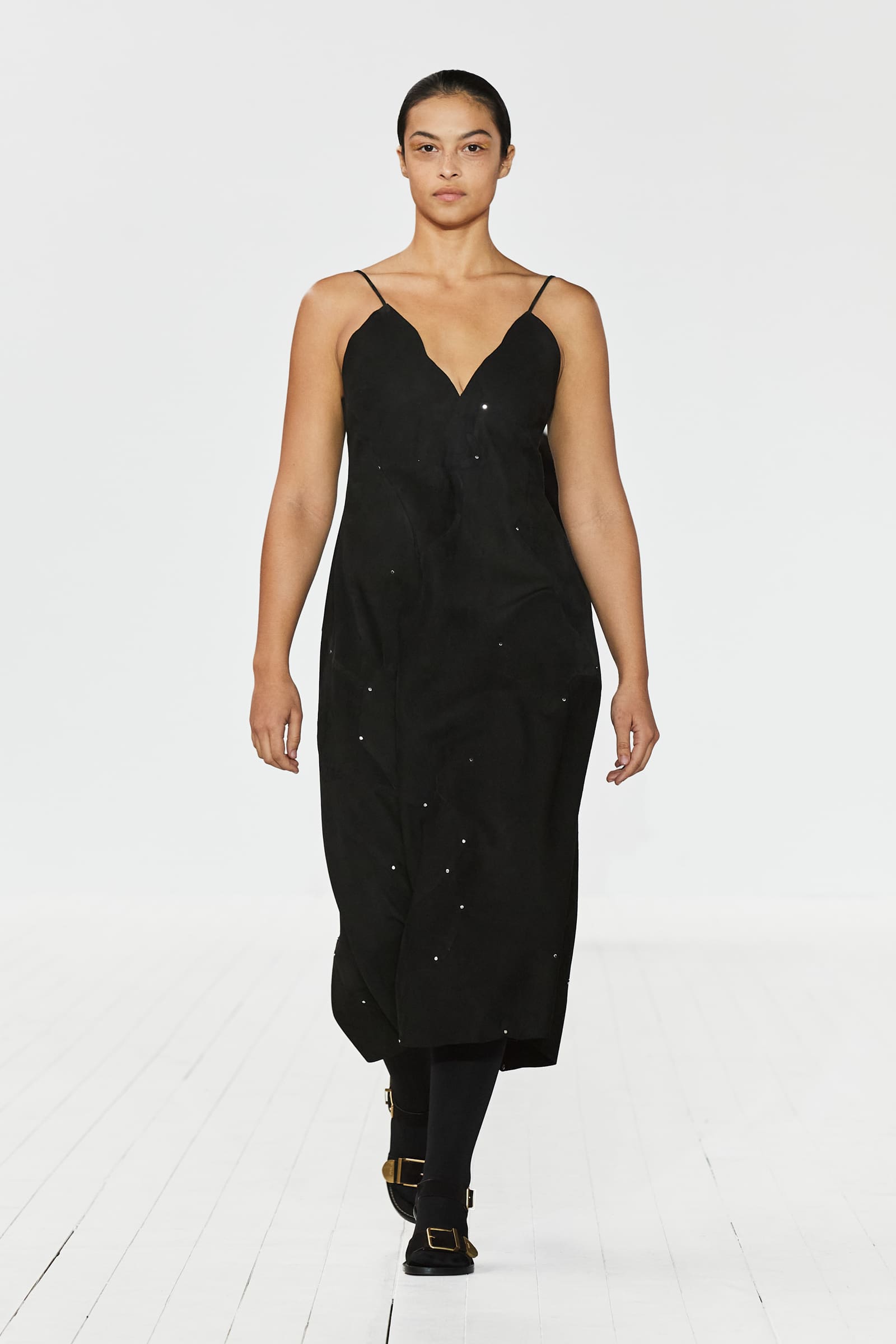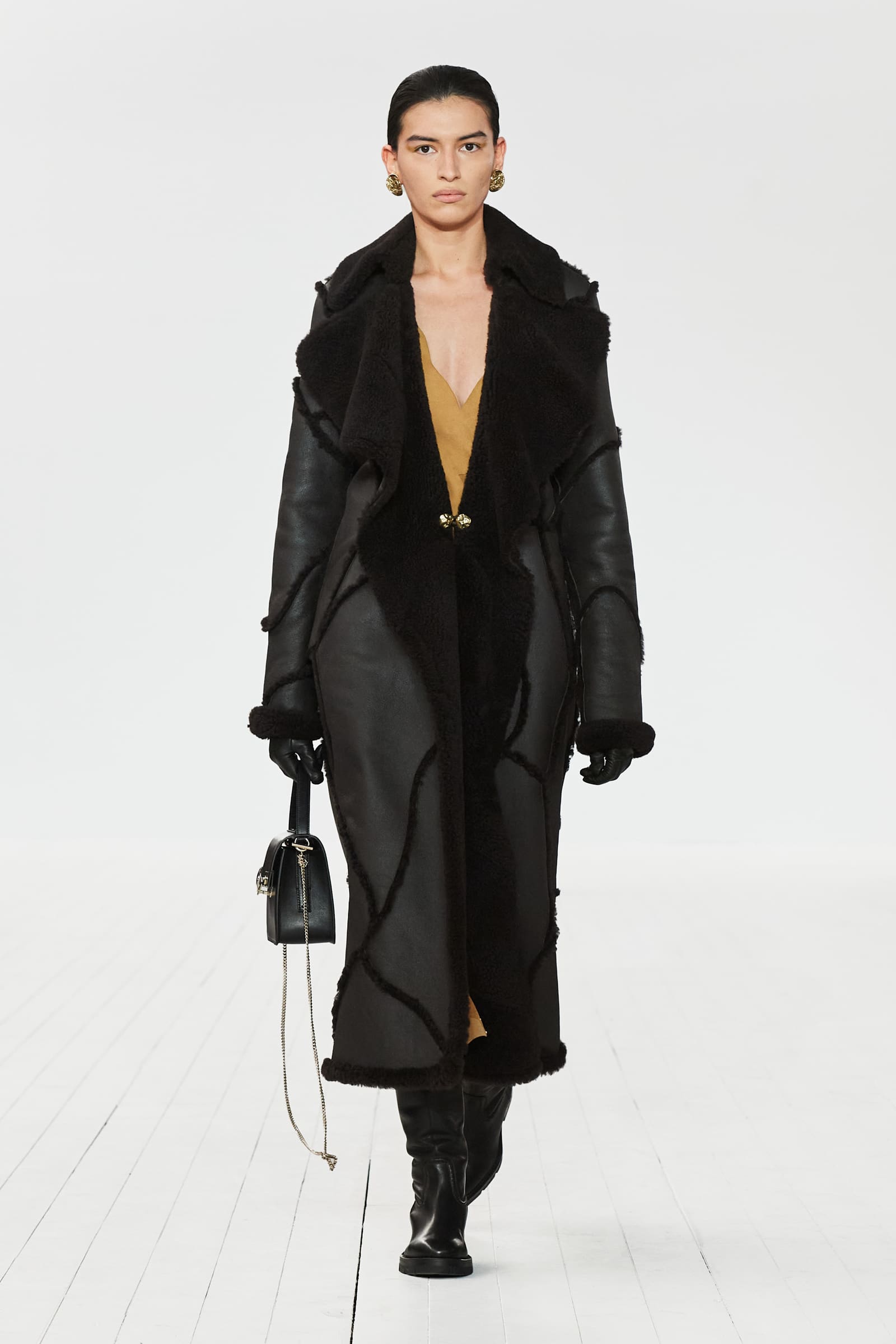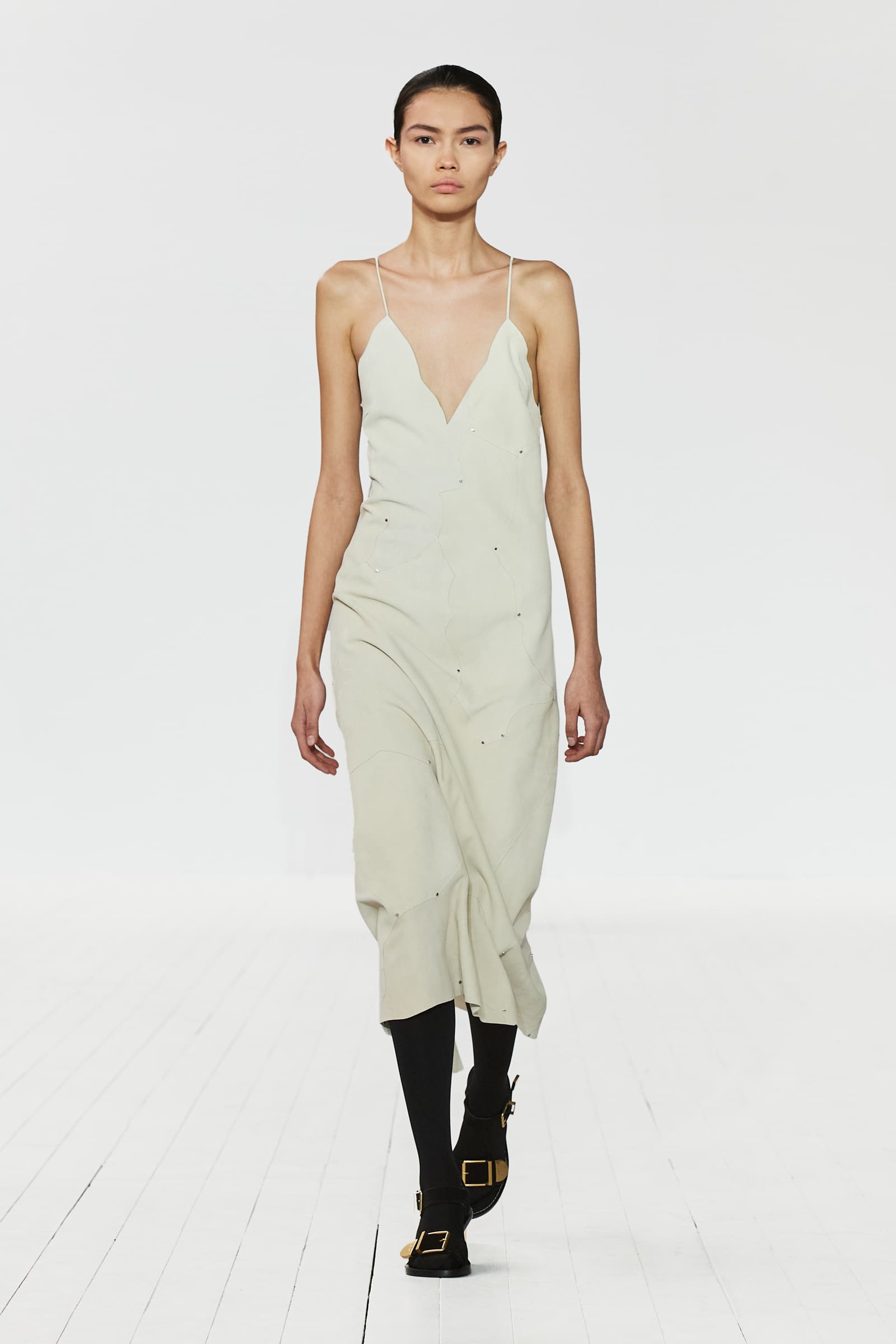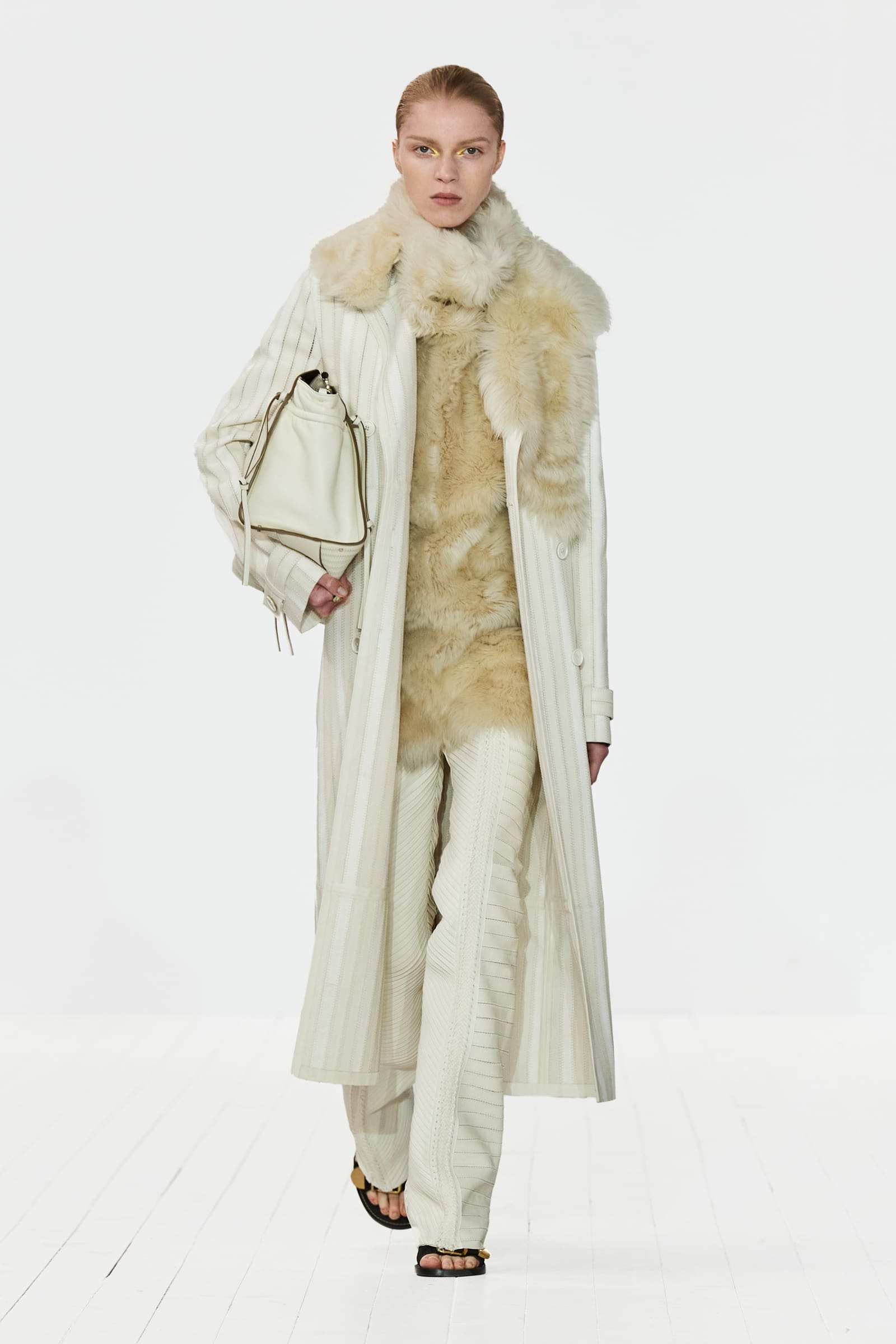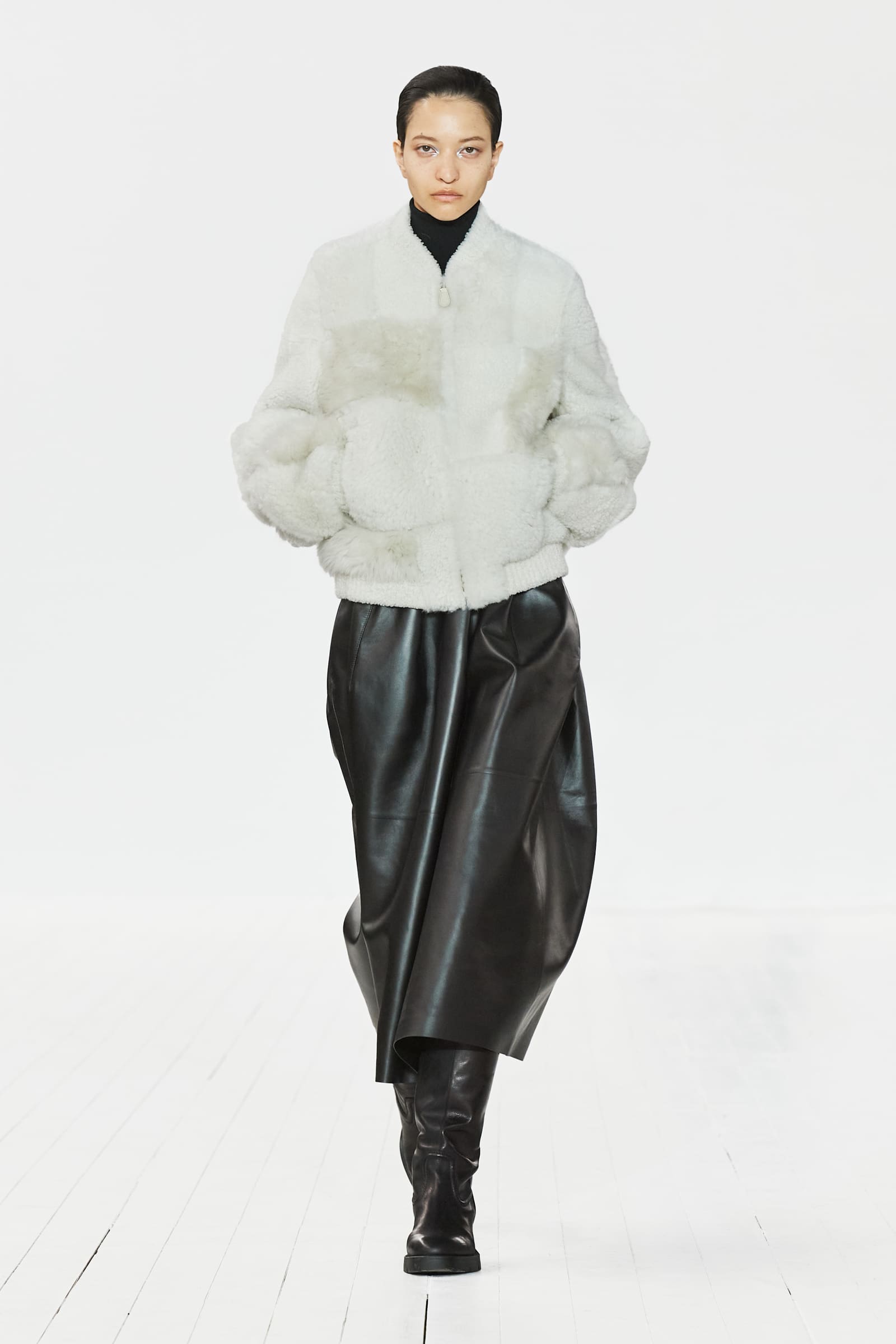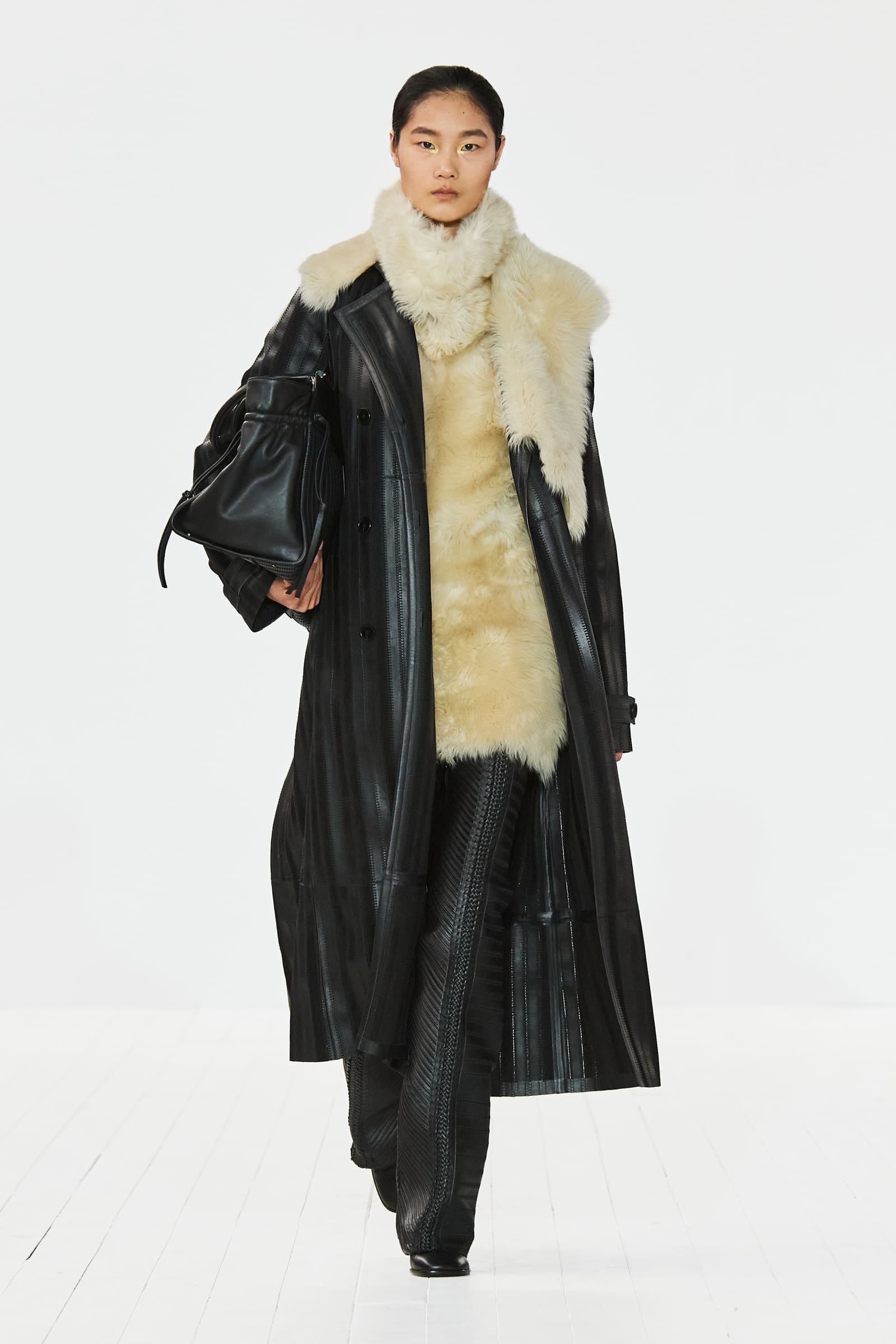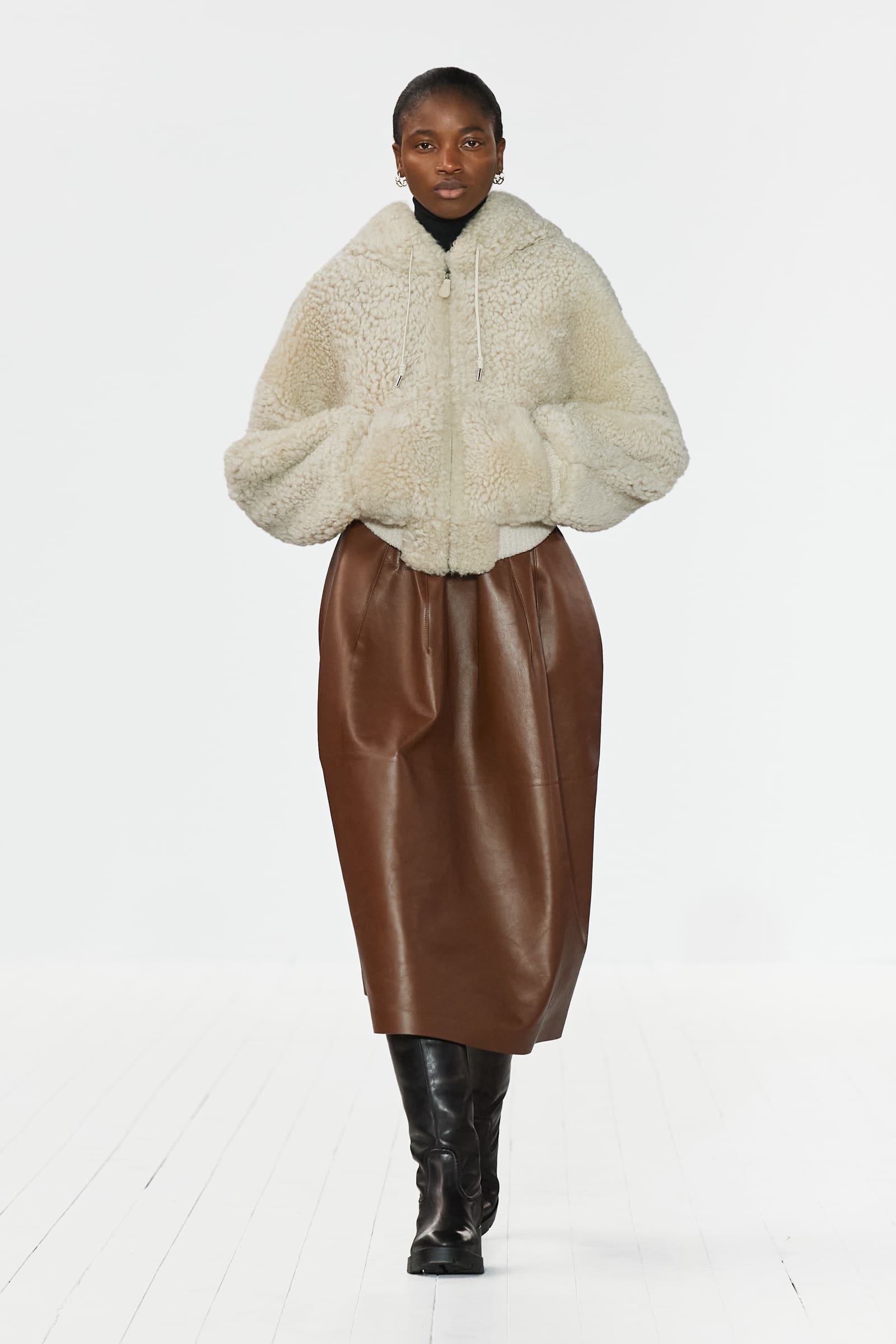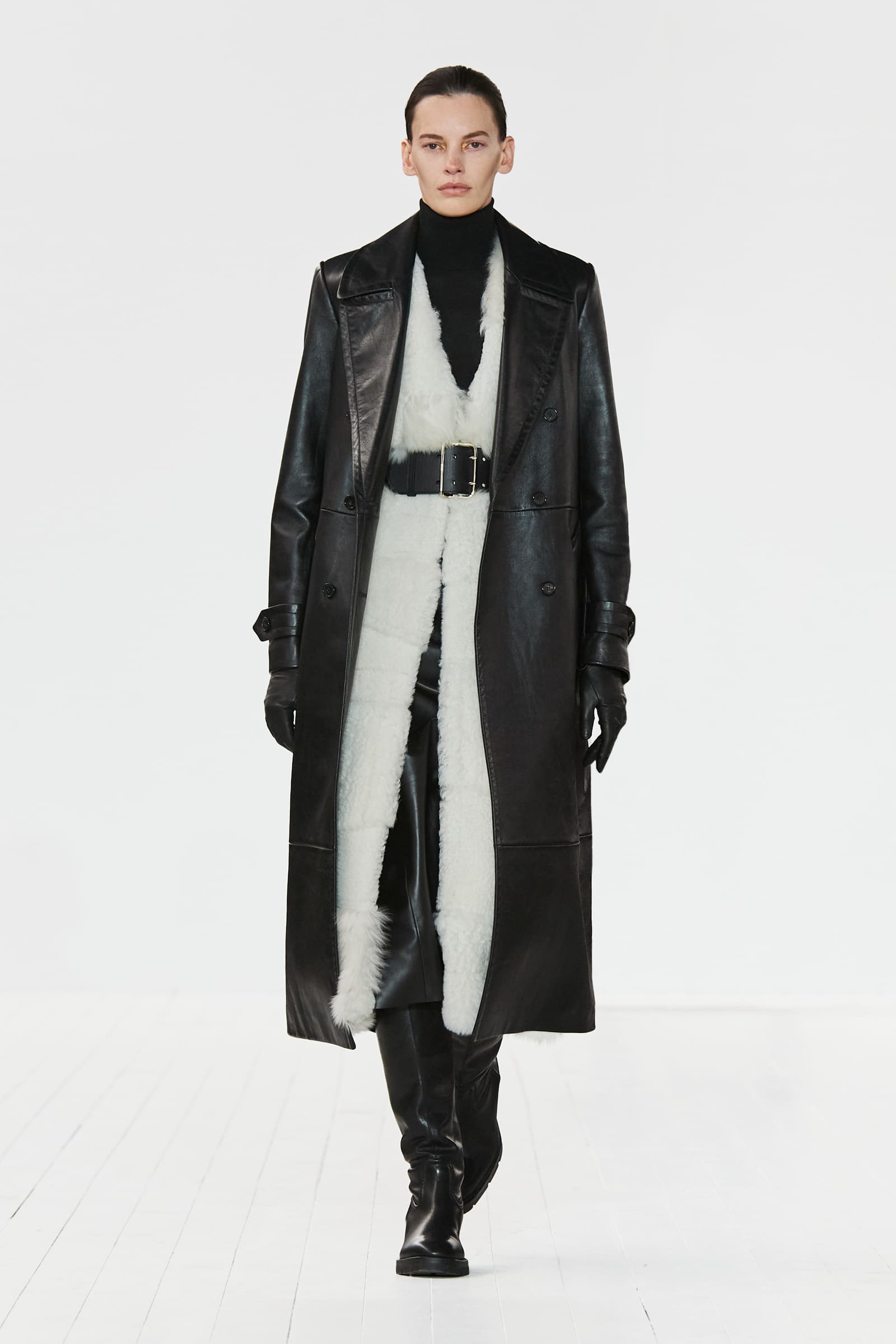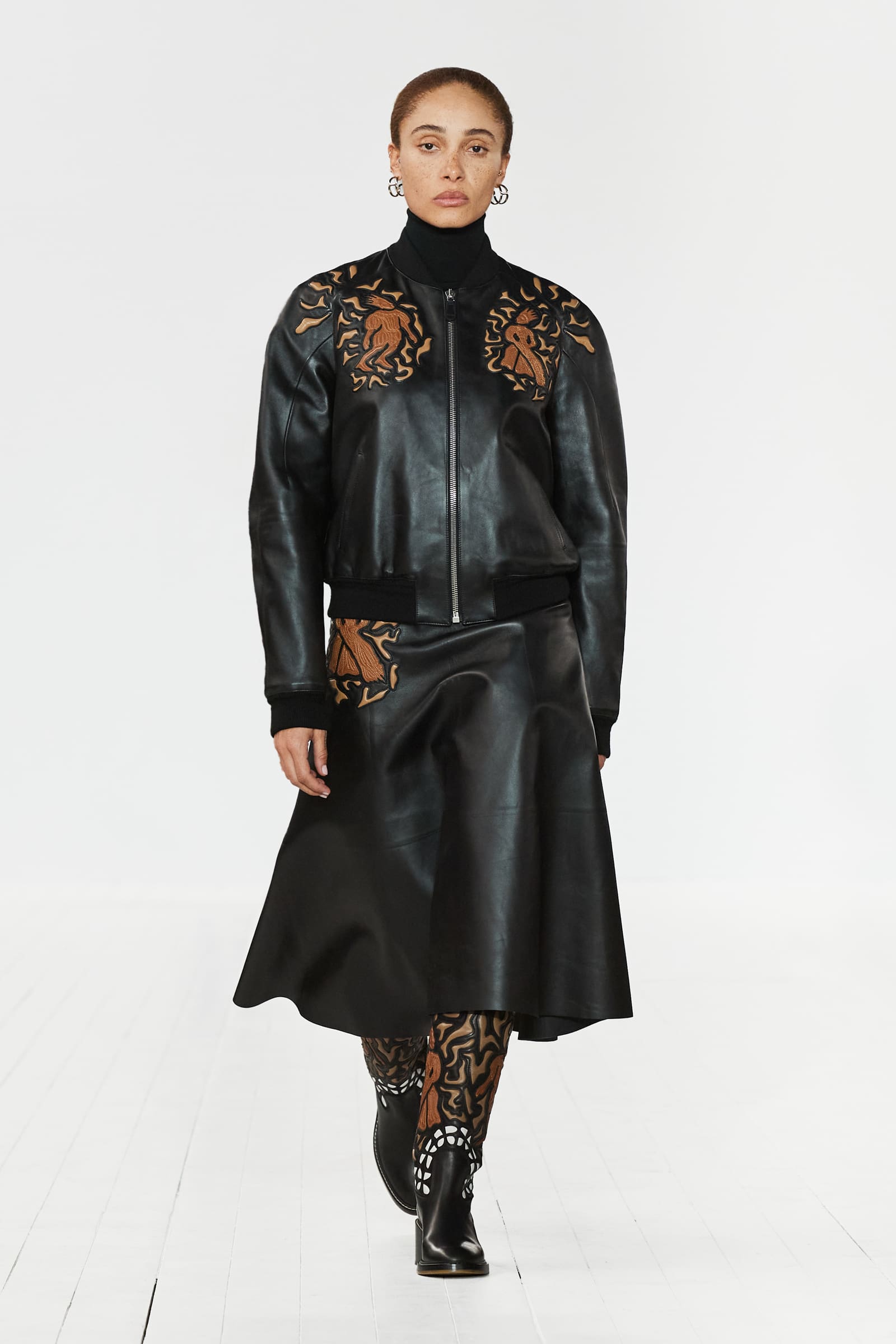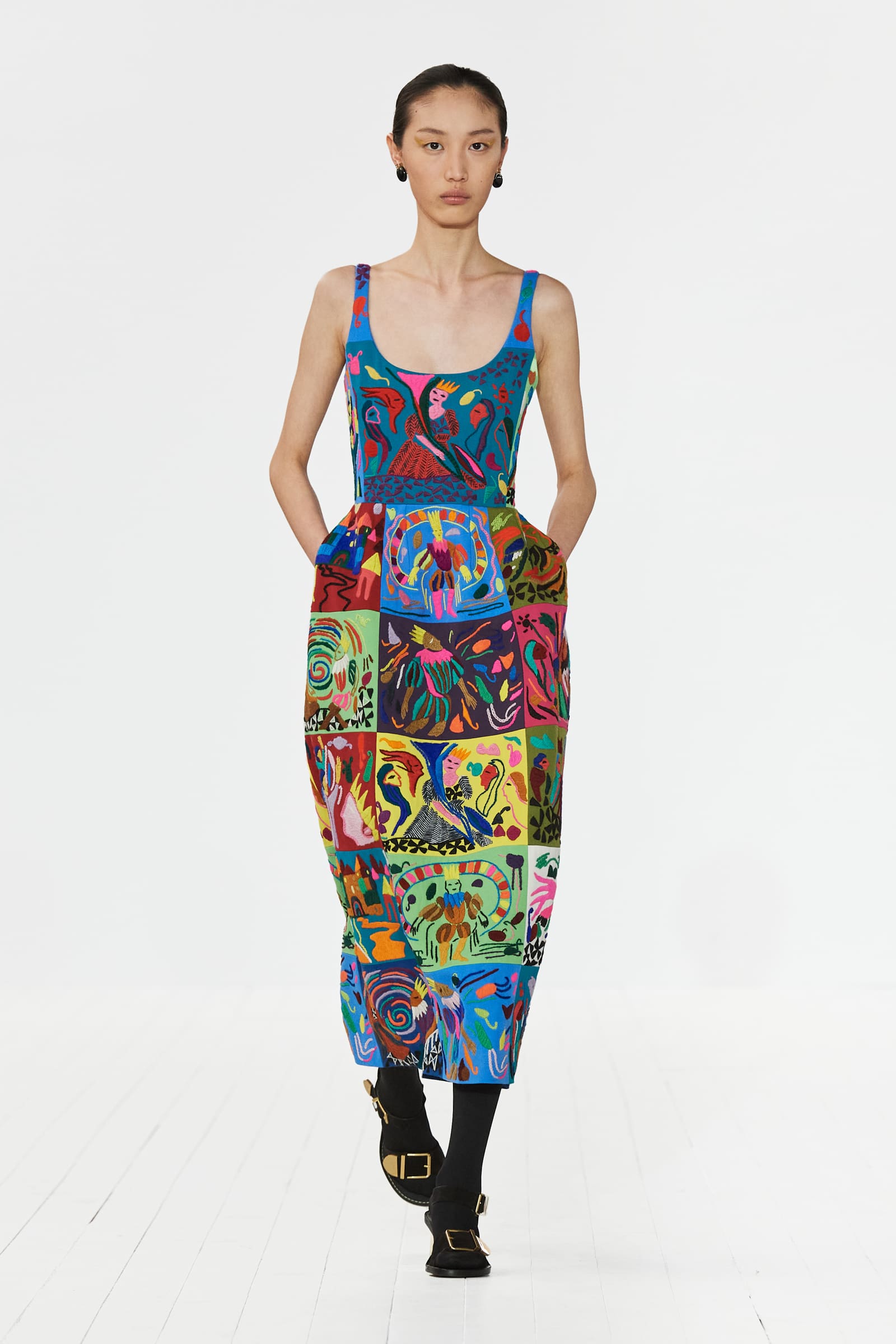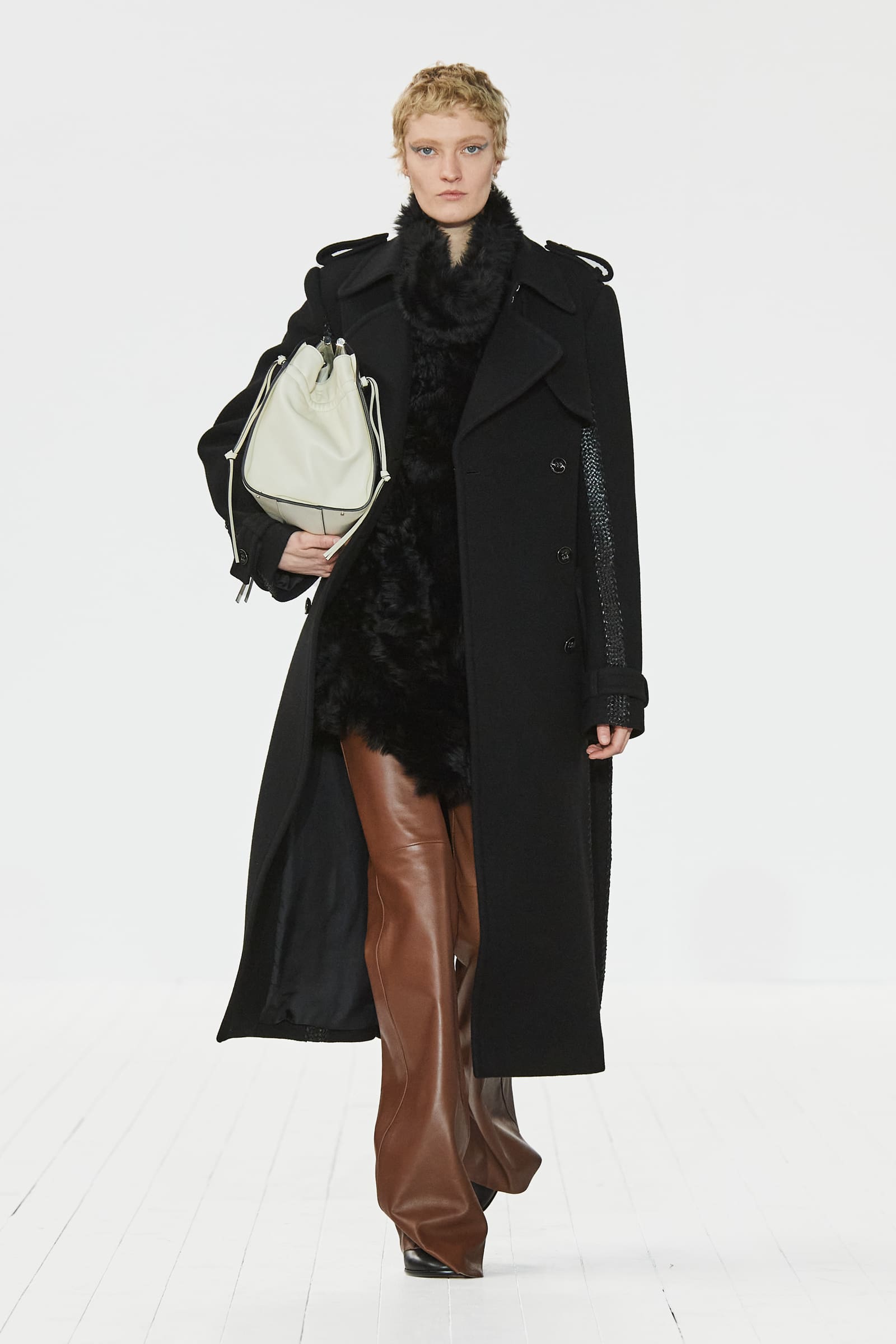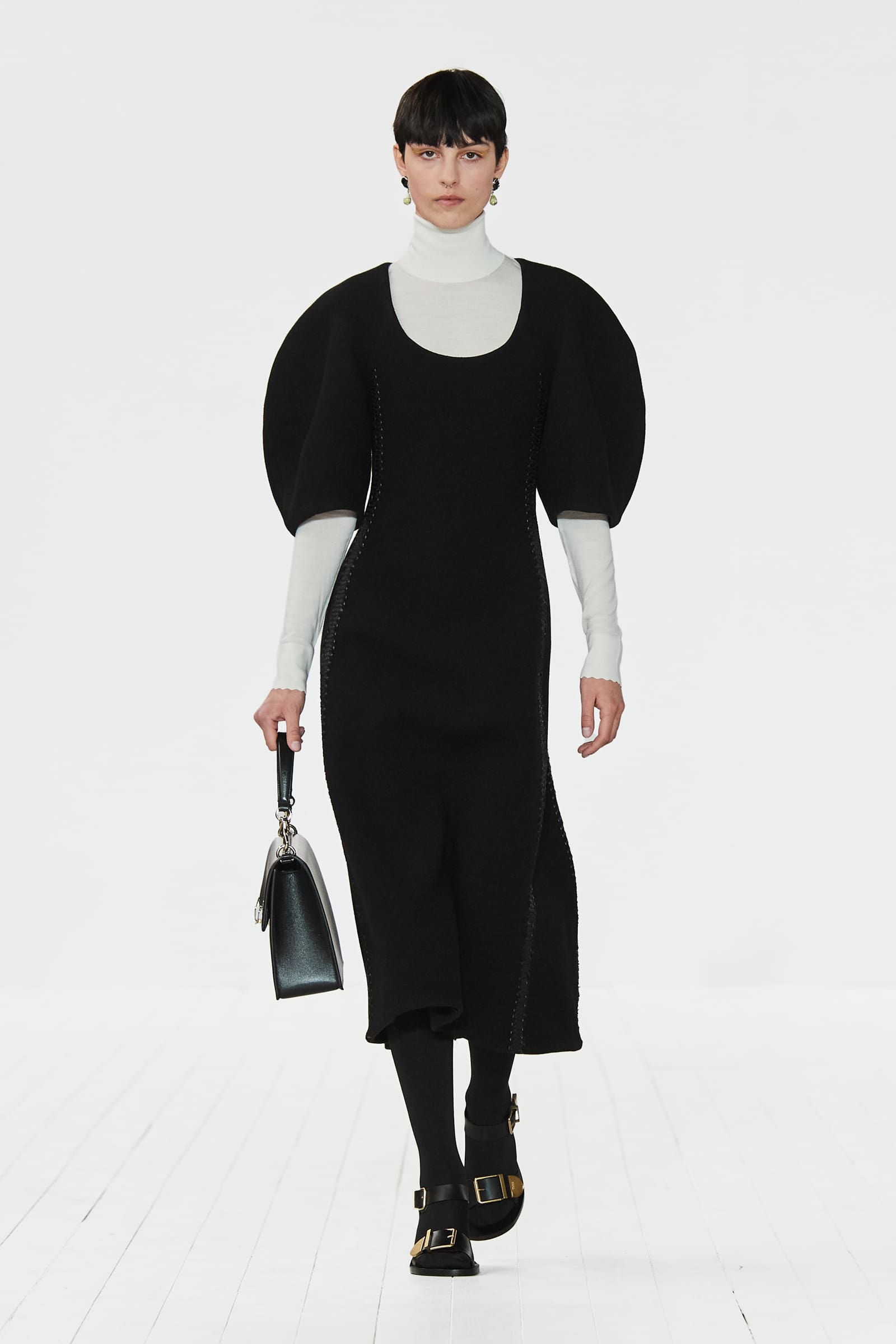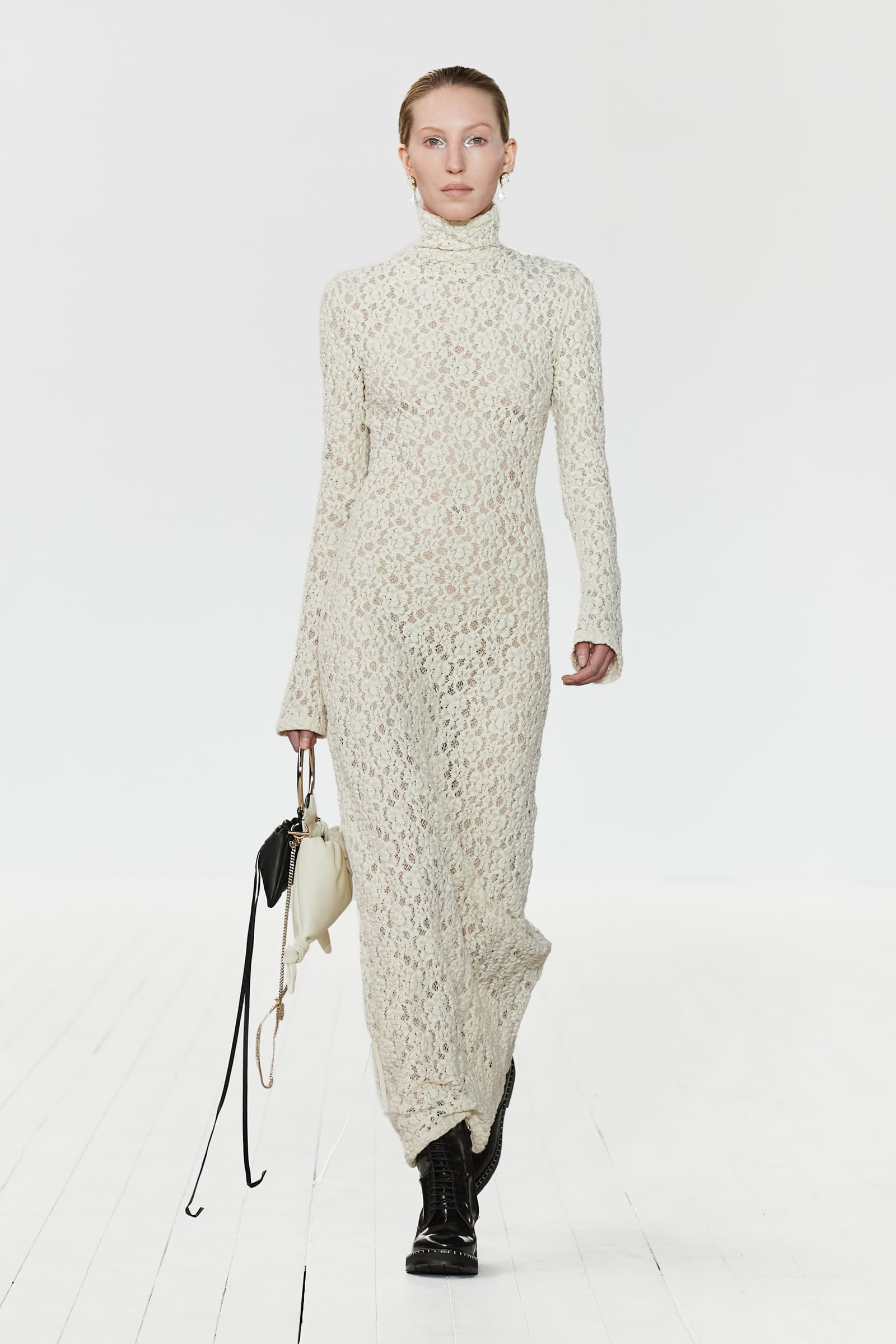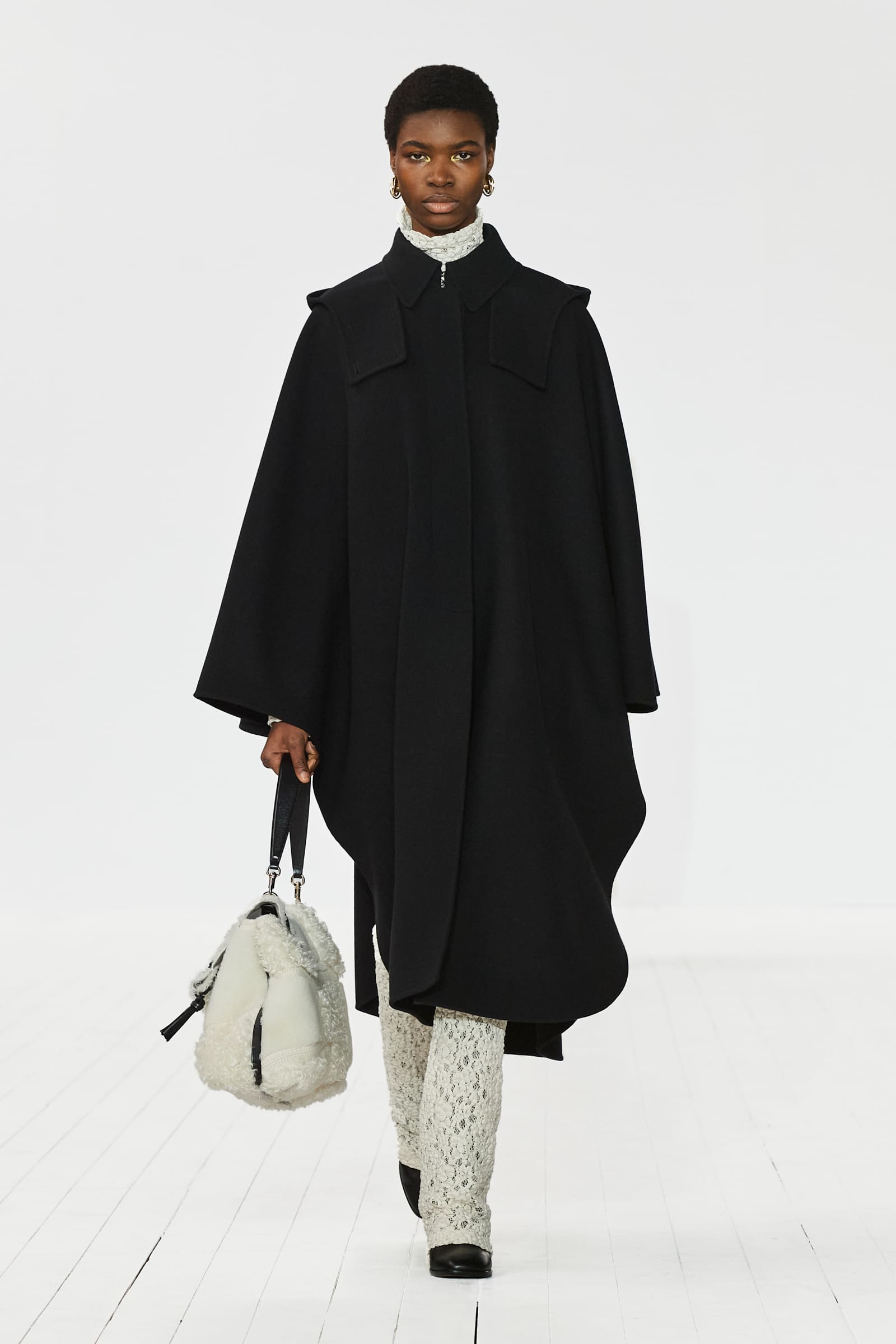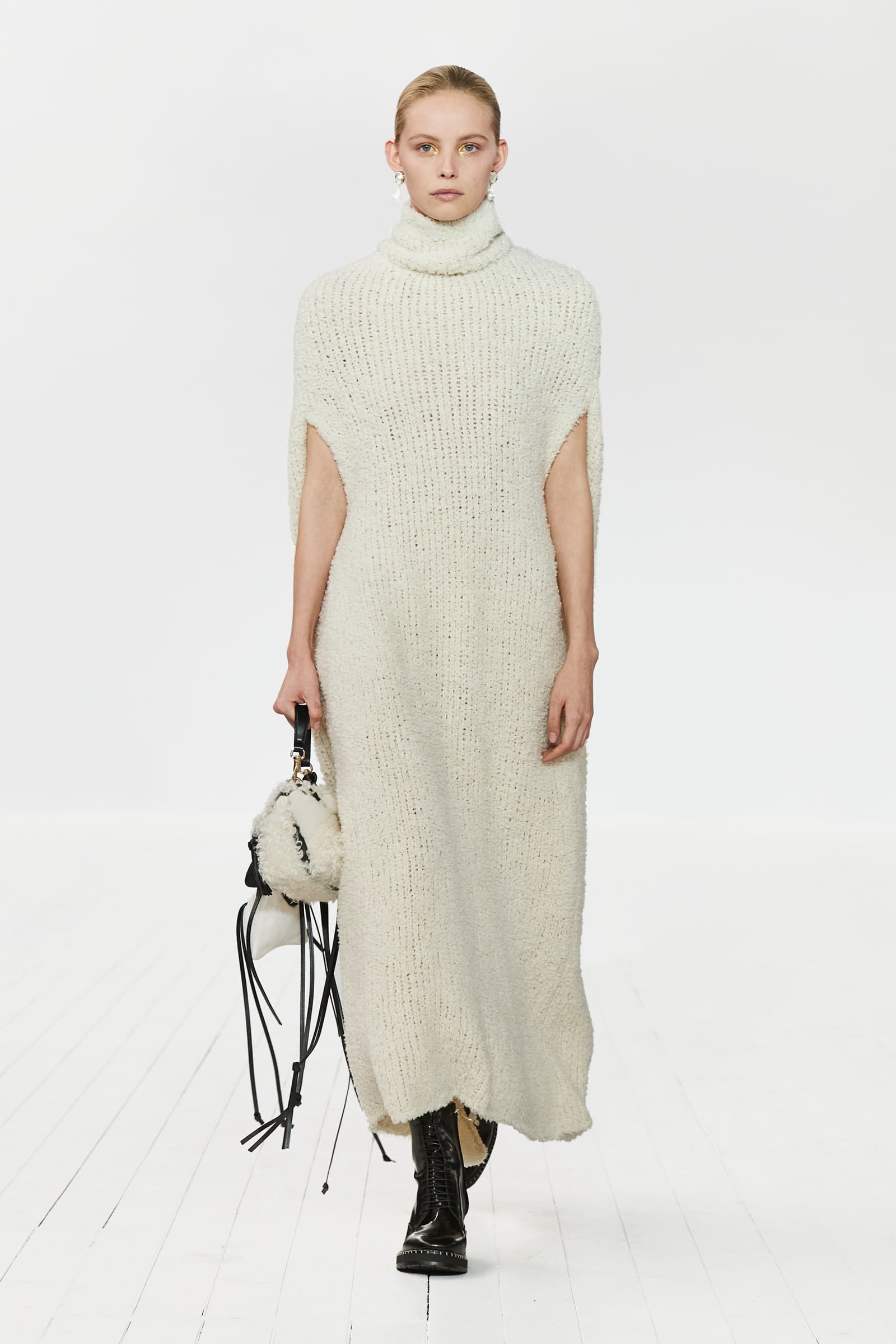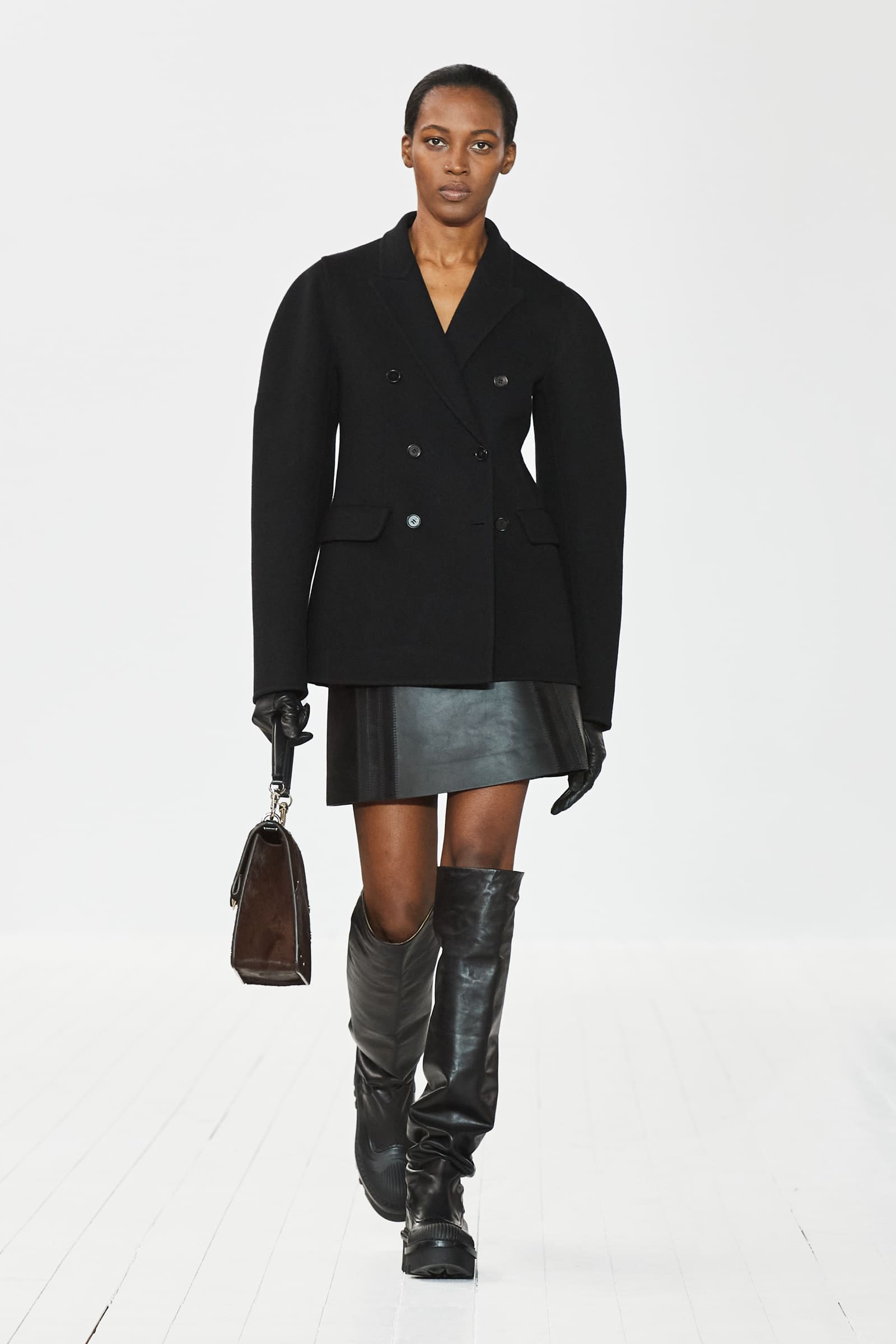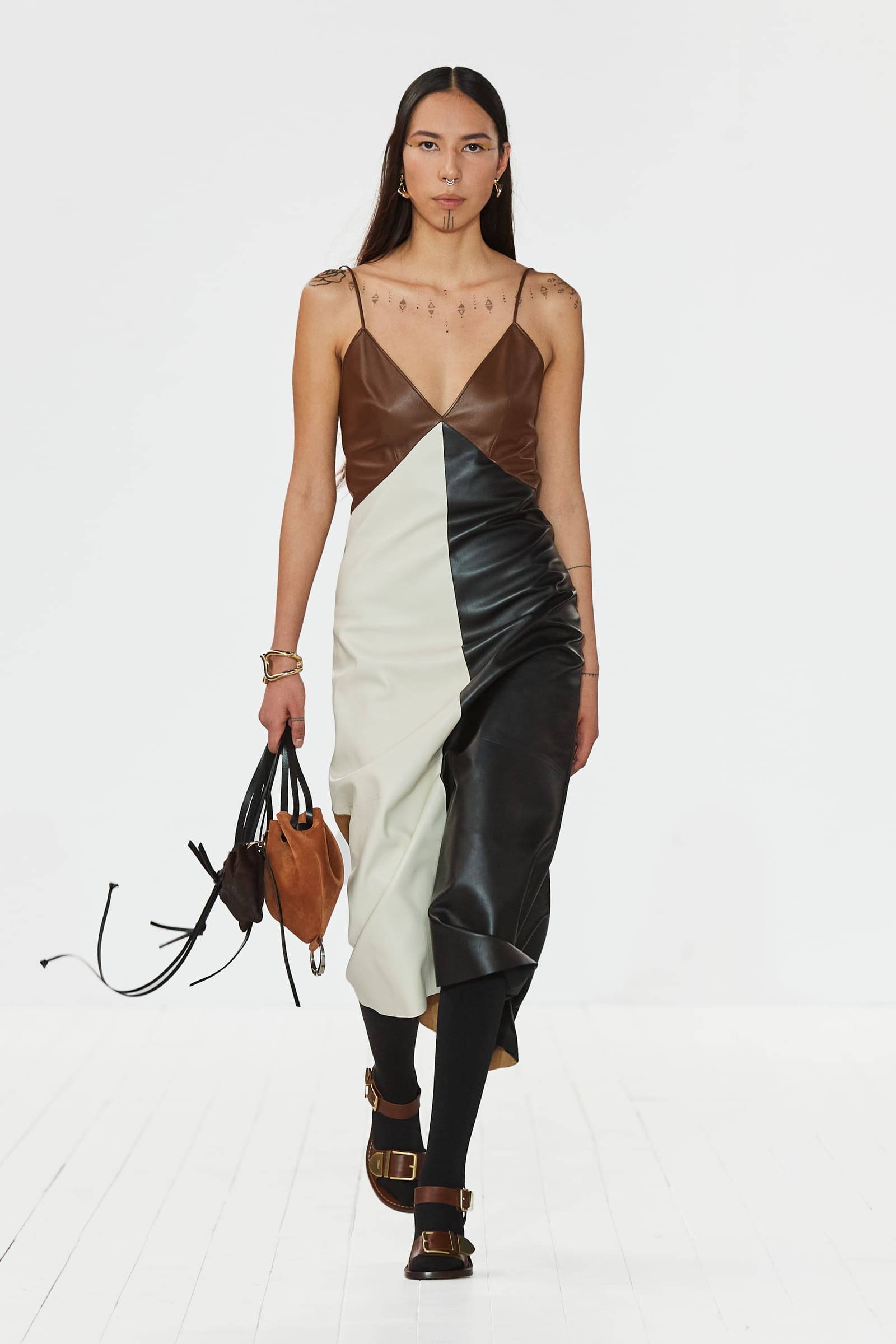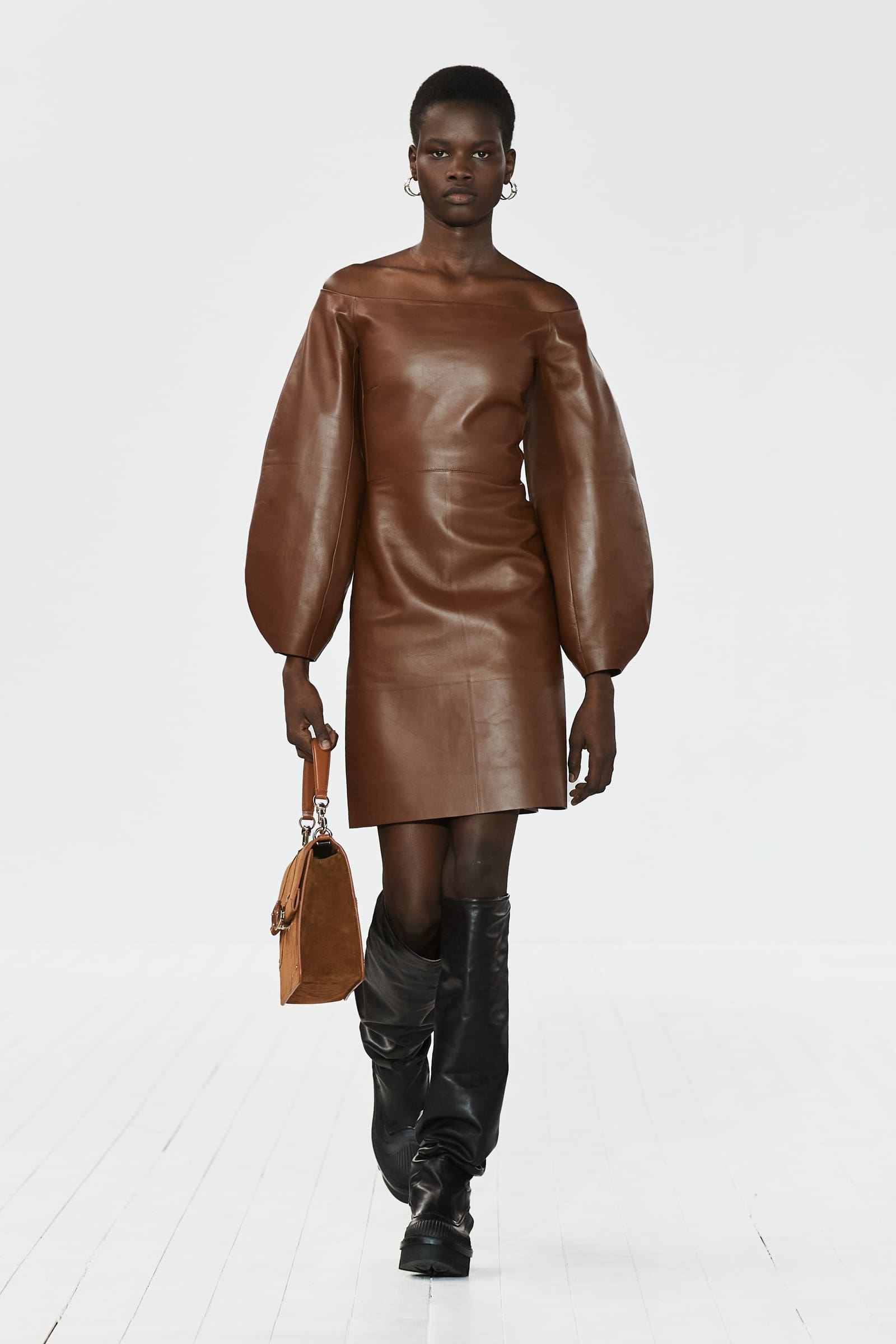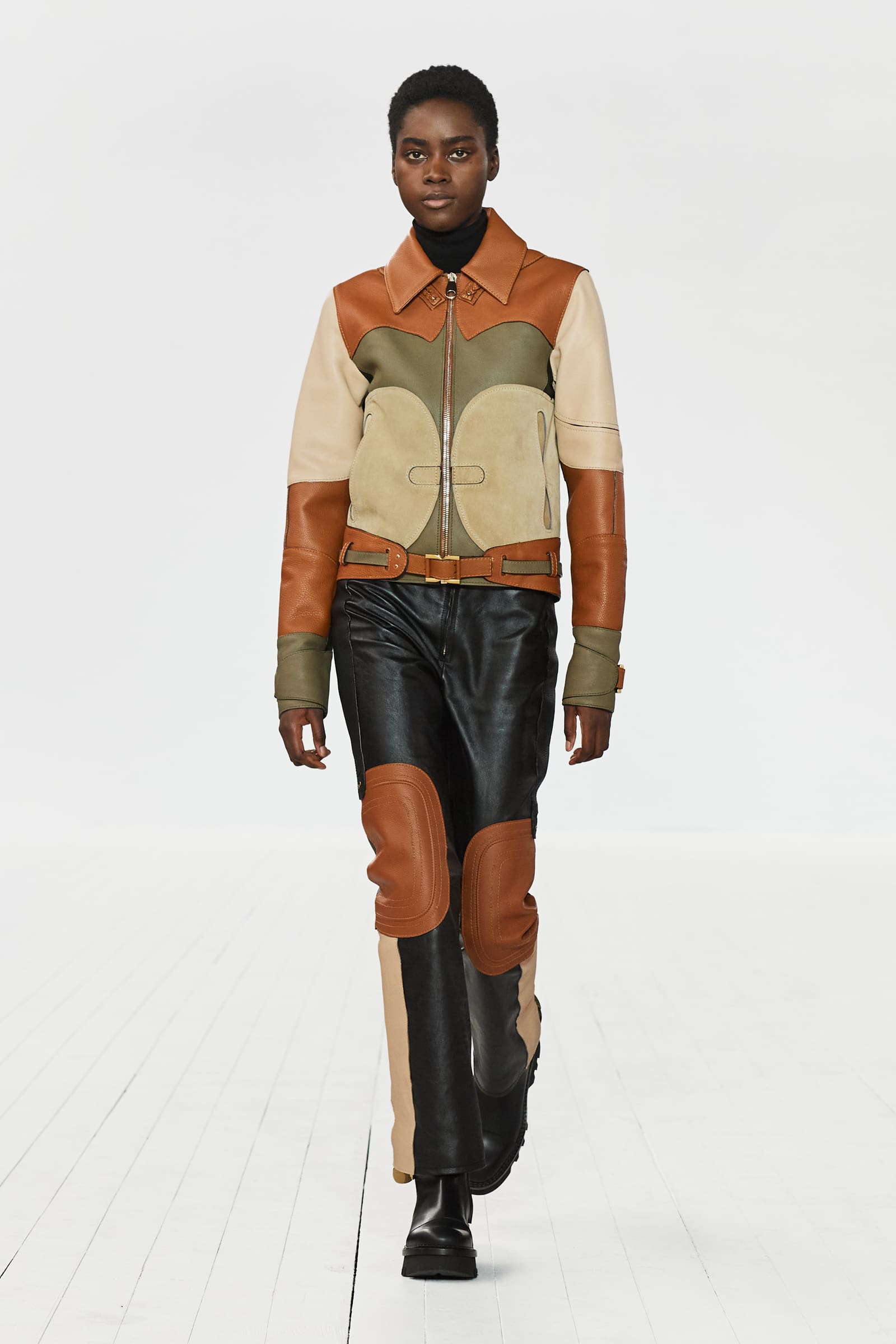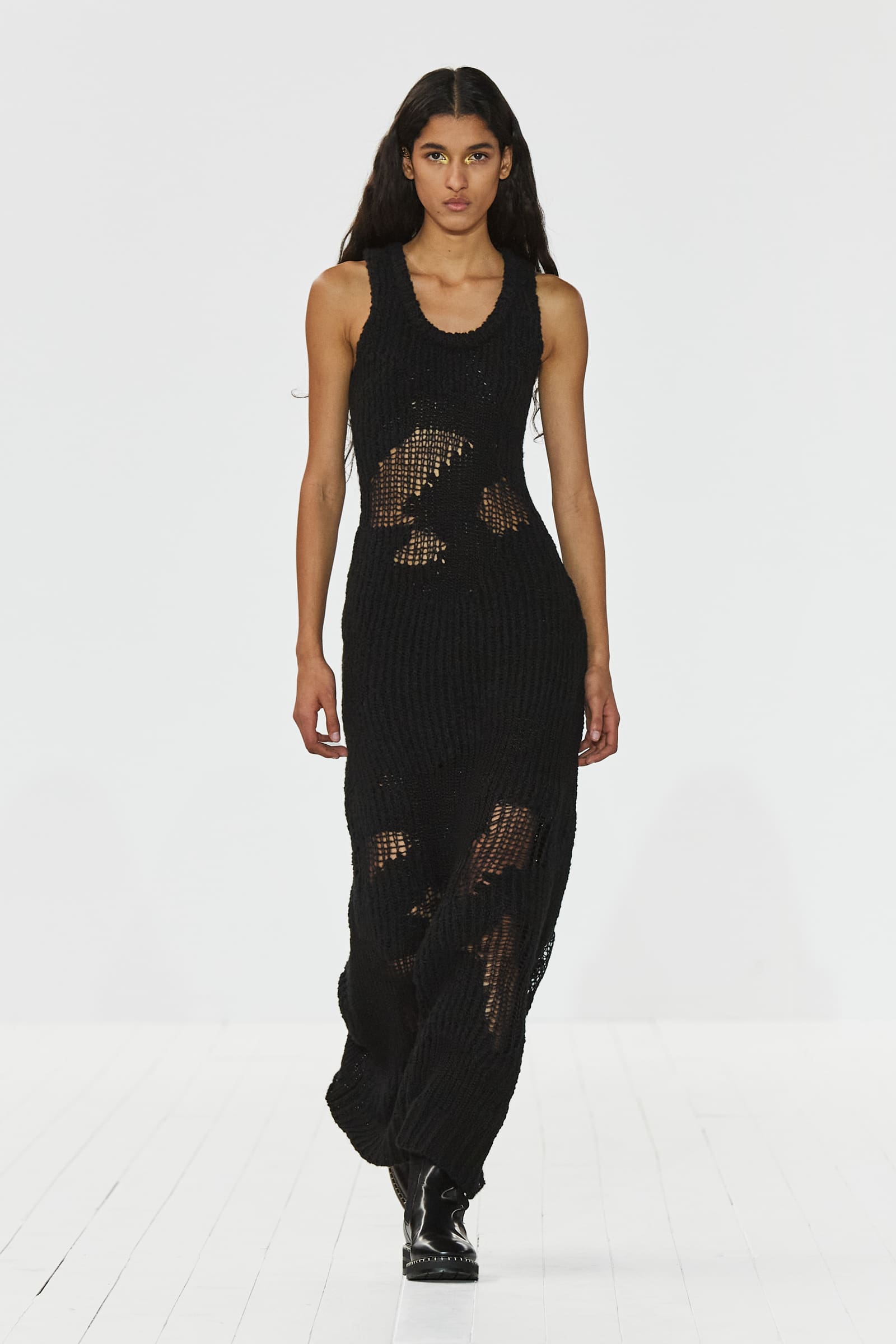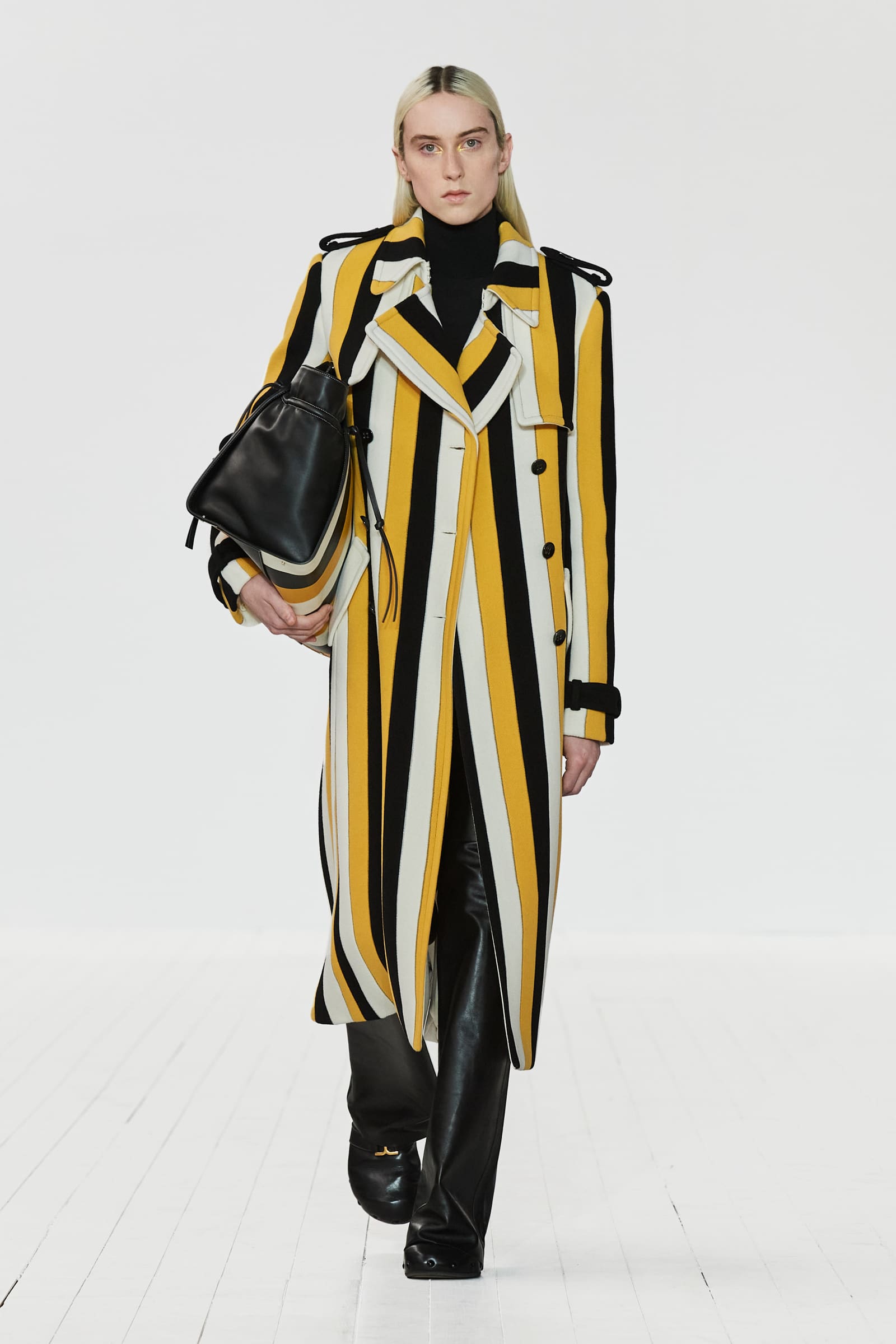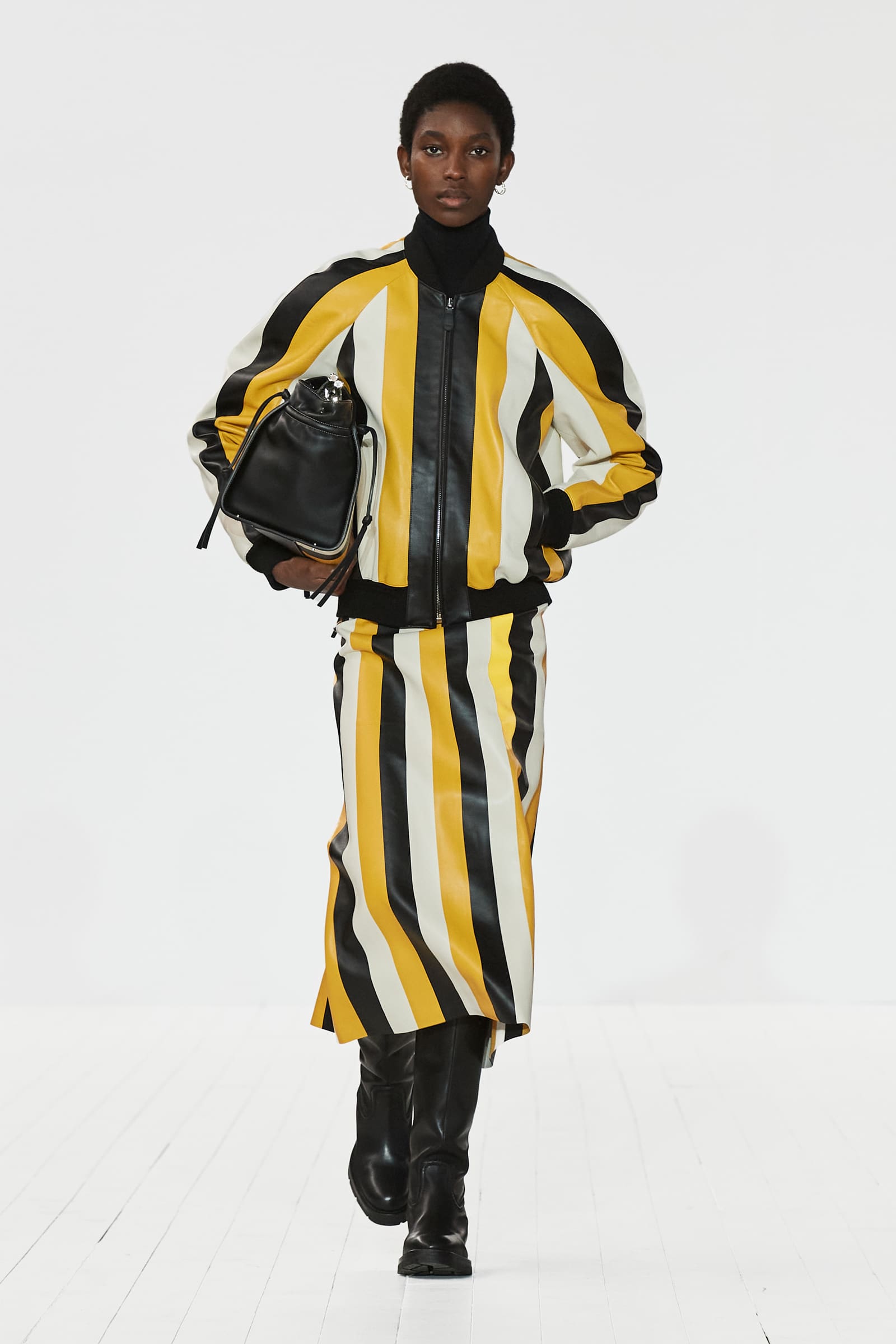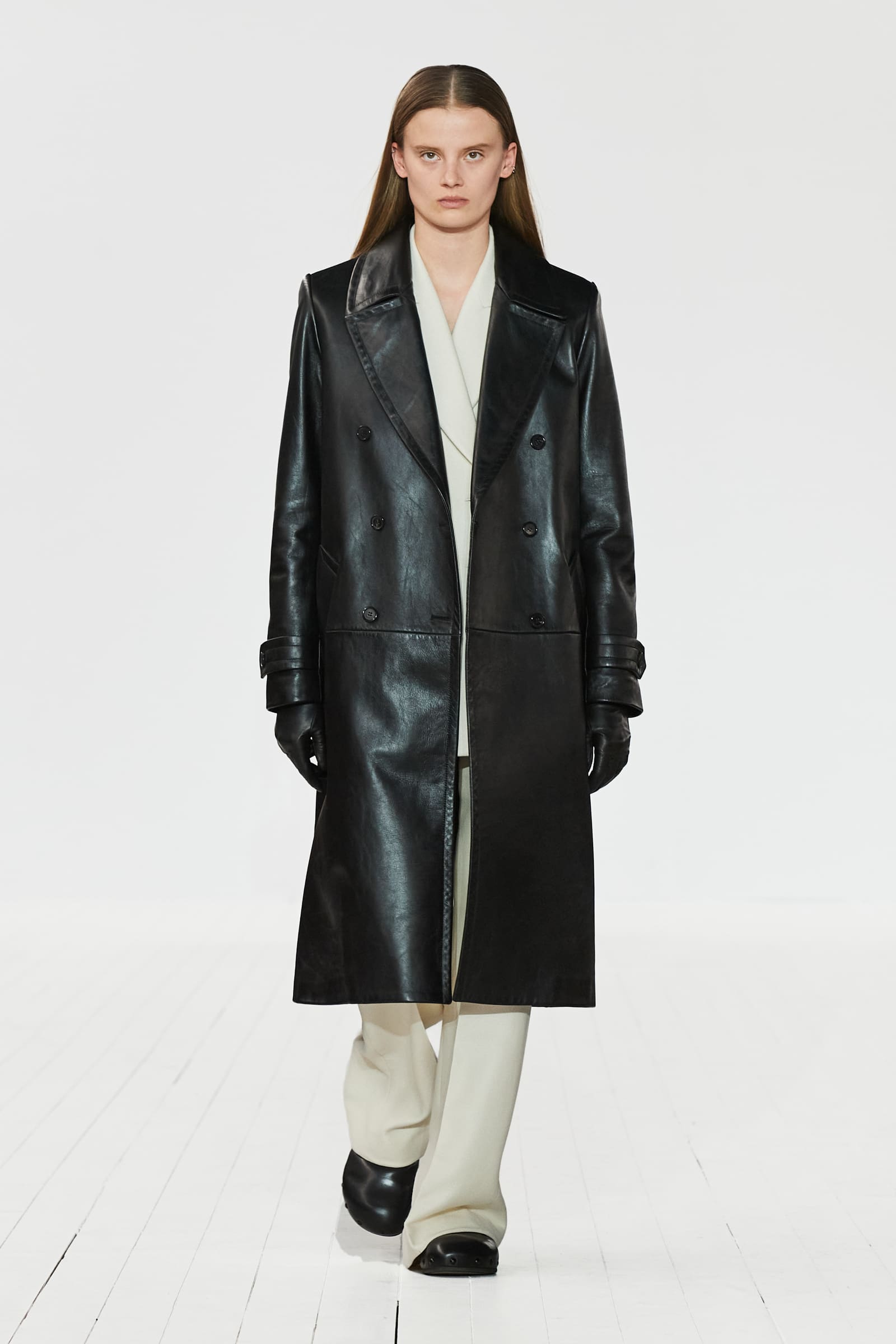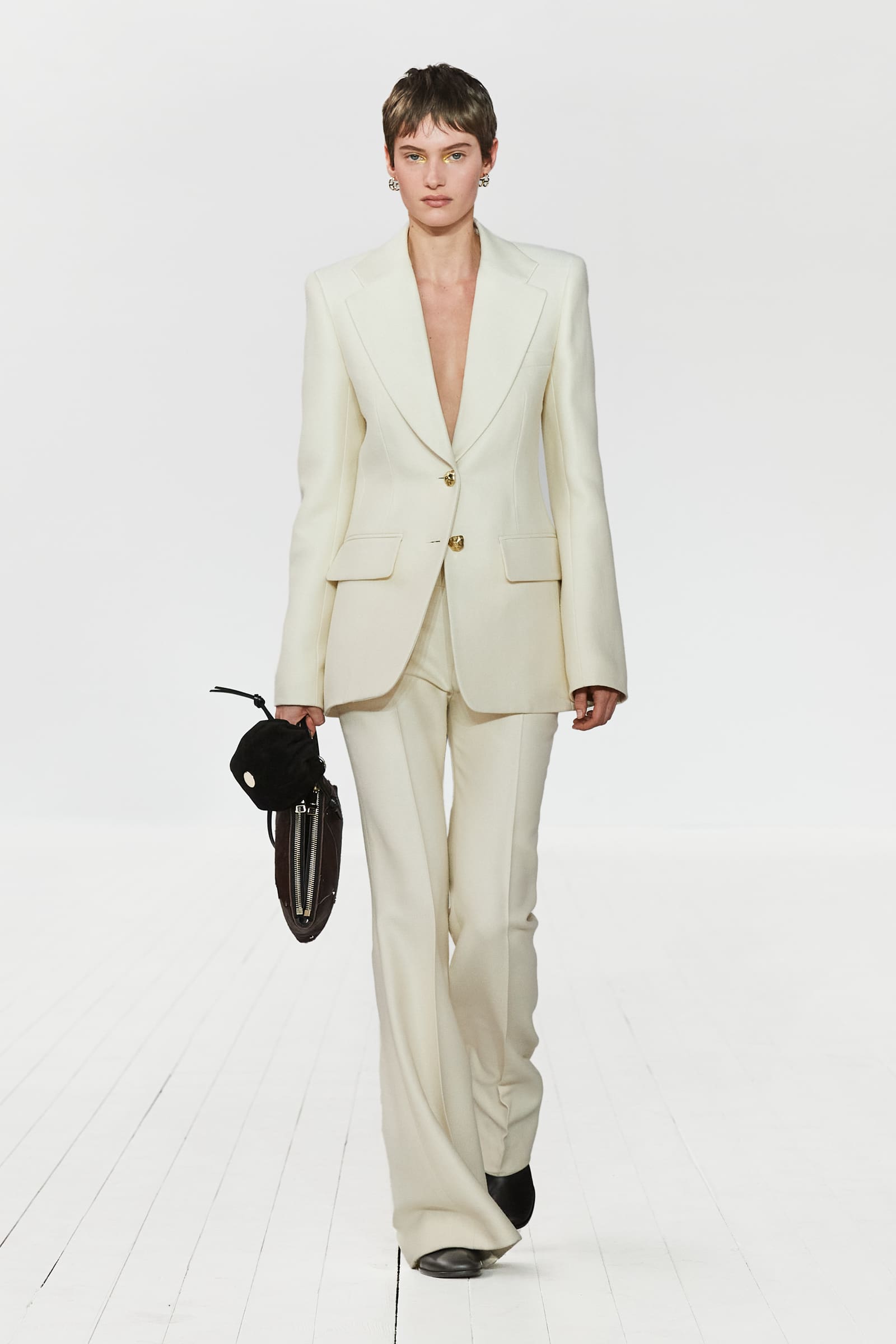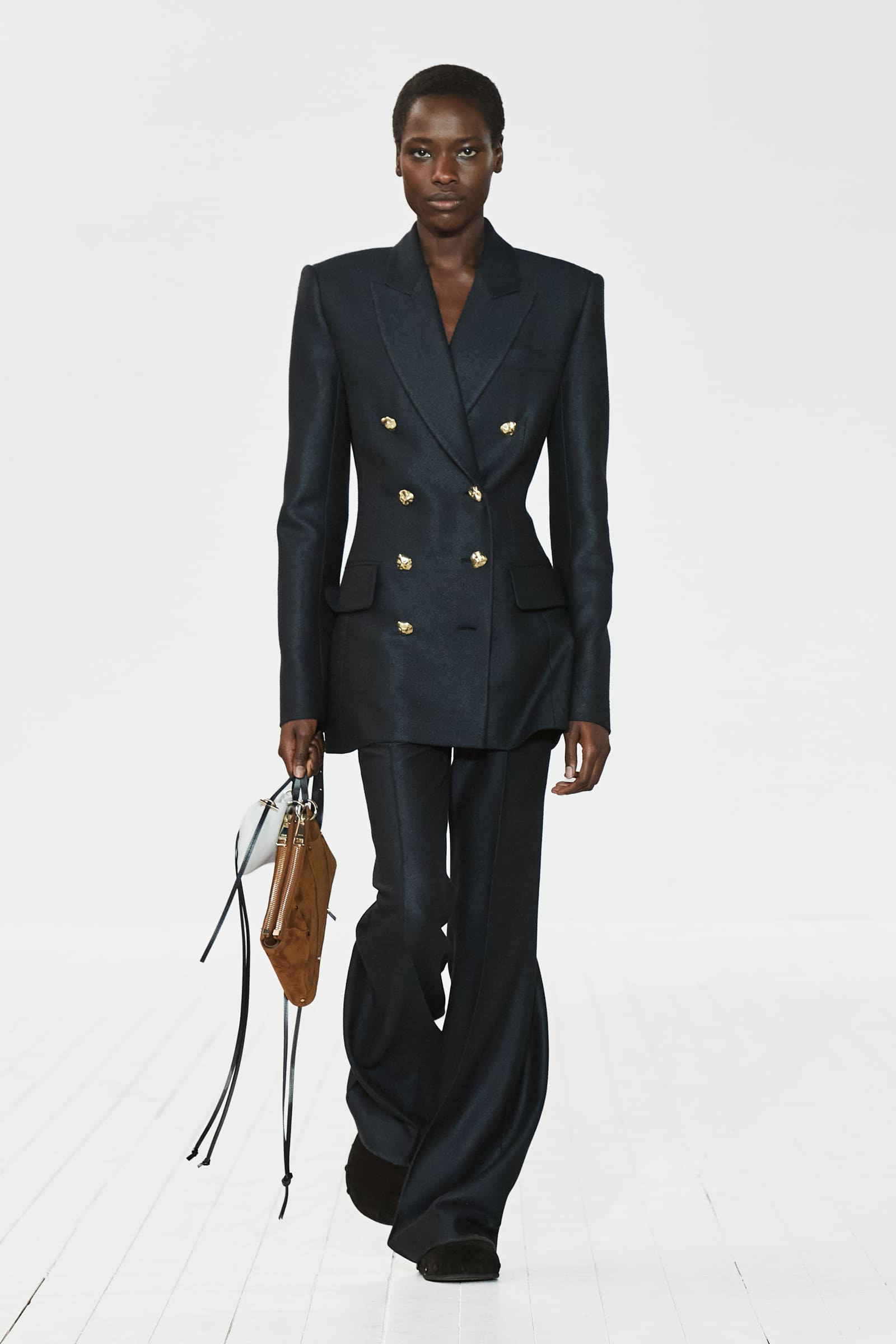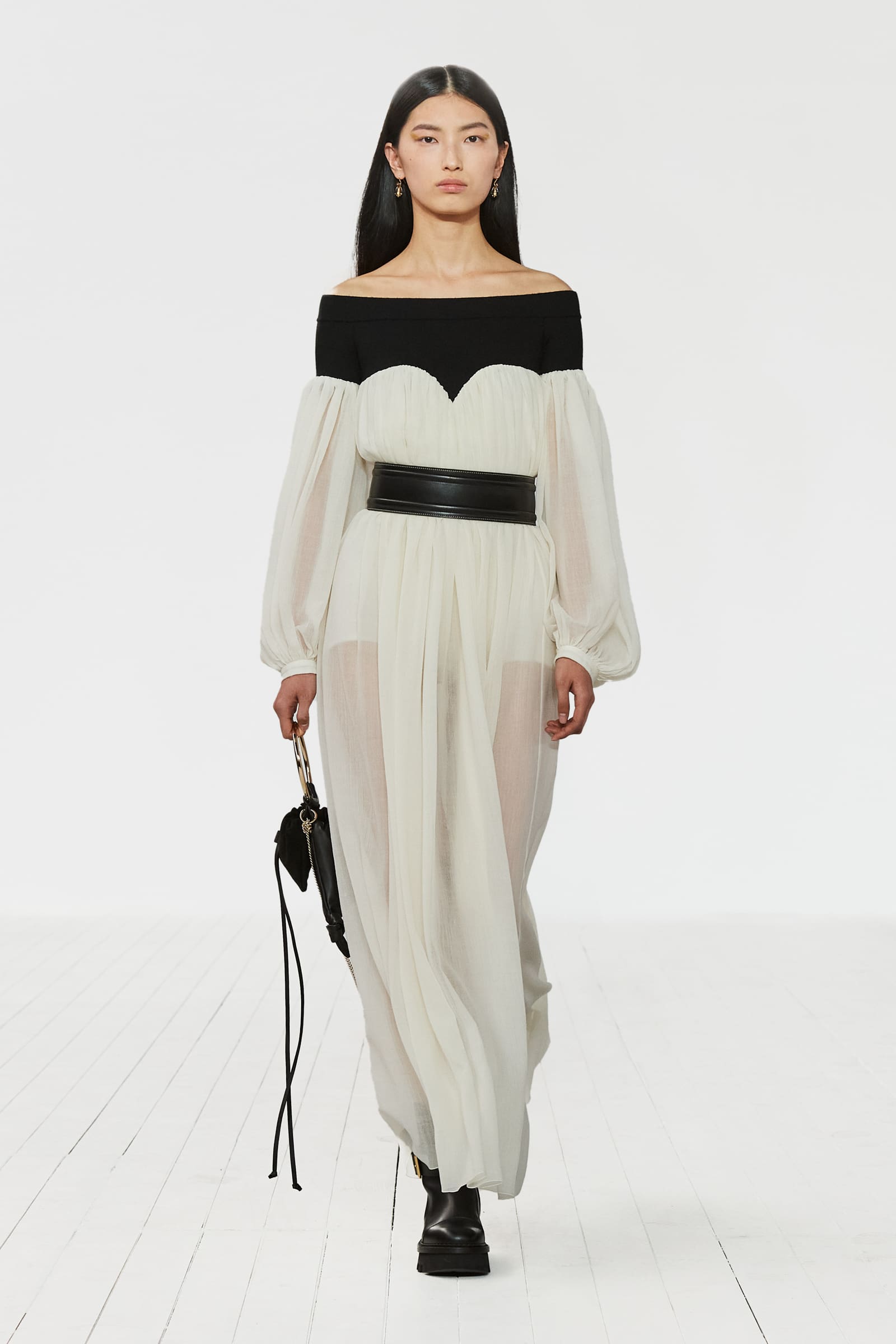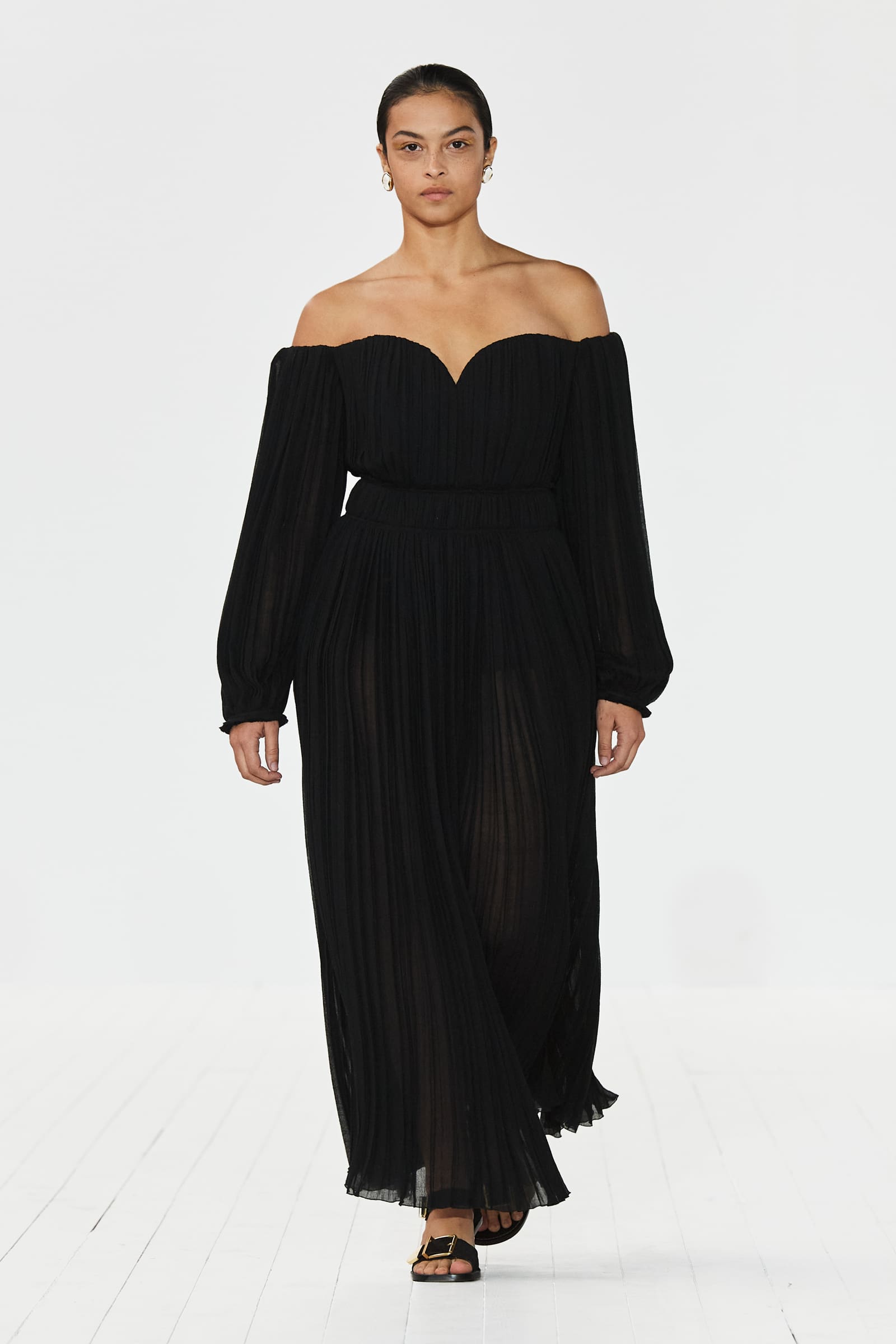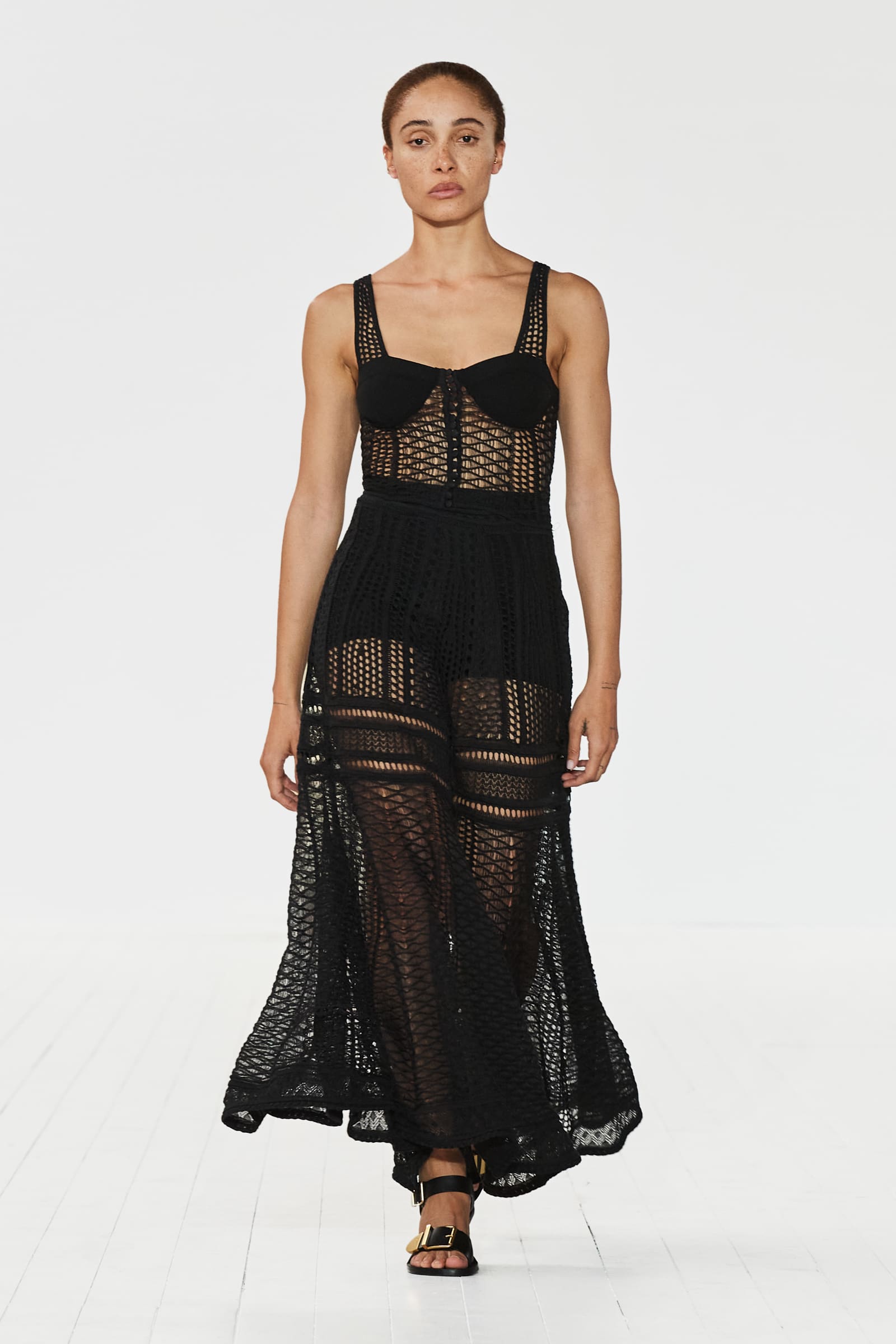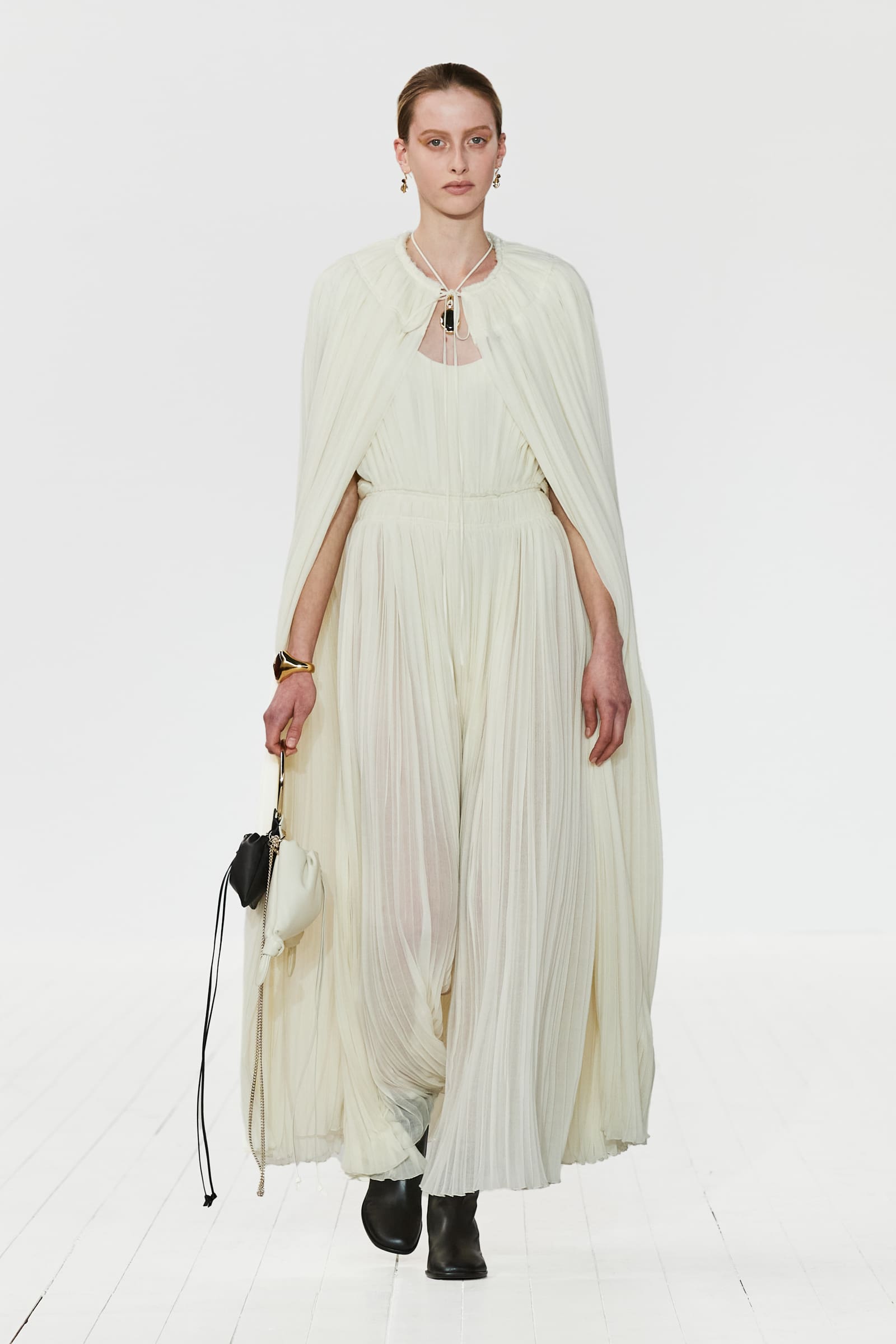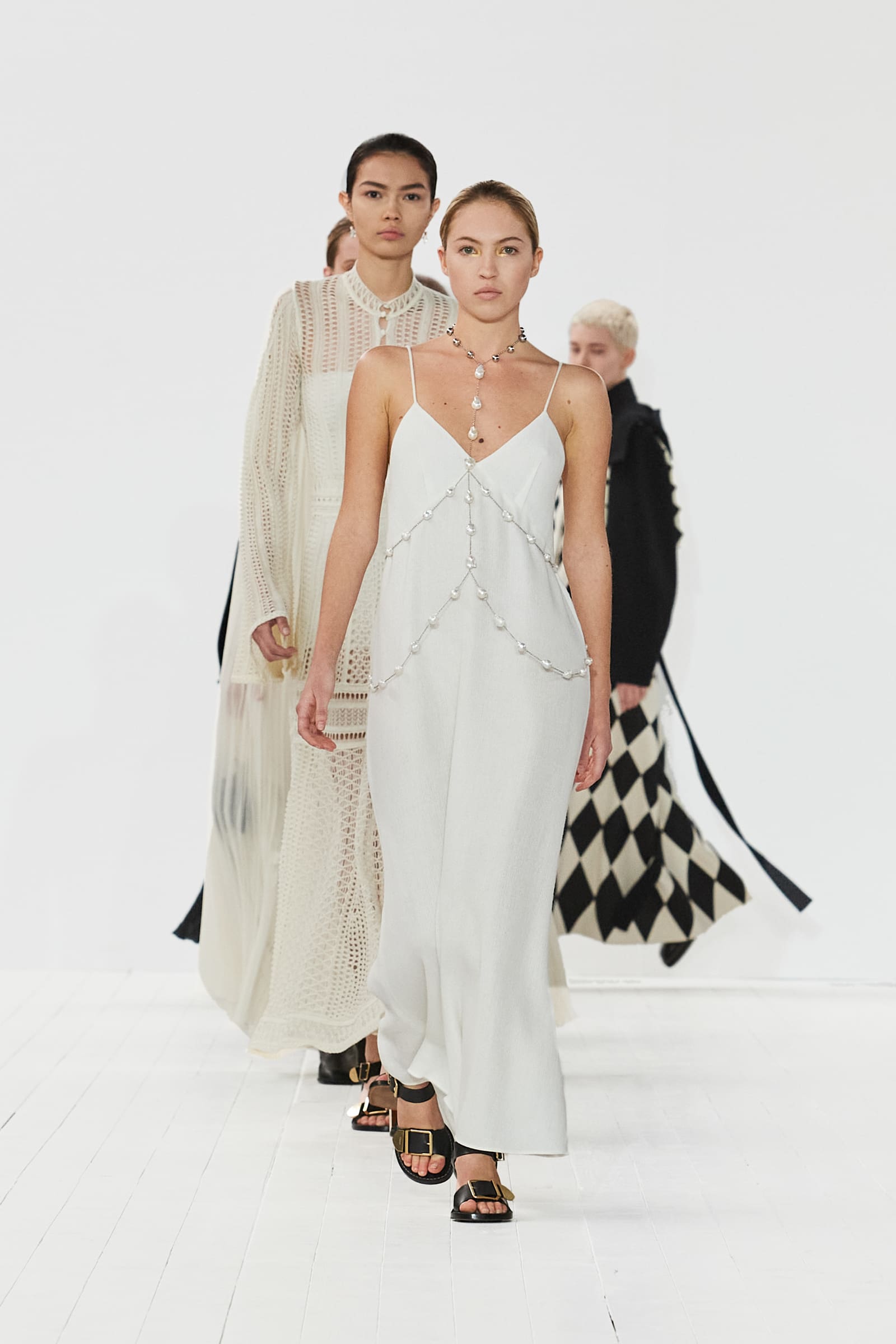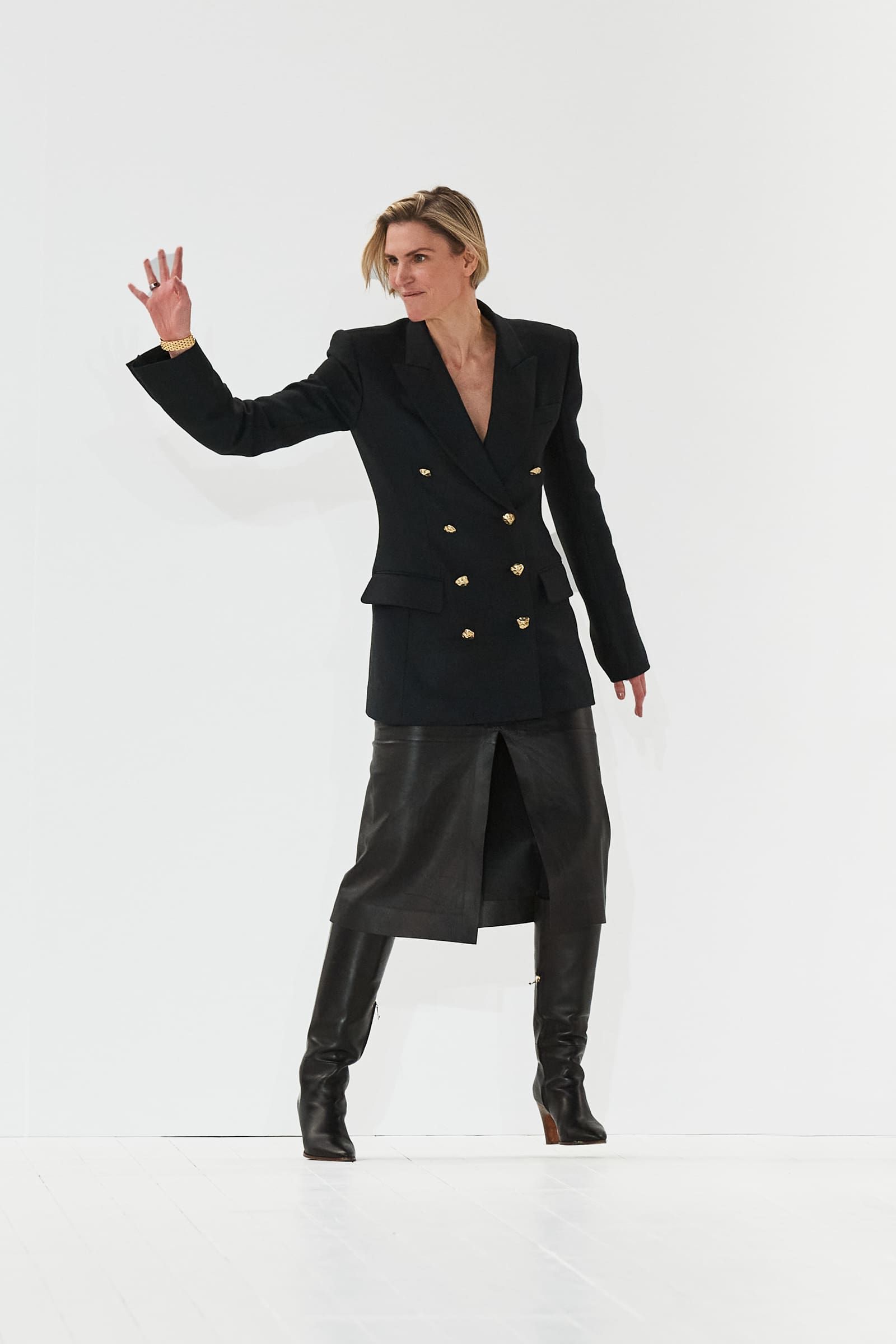
Gabriela Hearst prefers to proselytize about “Climate success, not climate crisis.” She’s an expert on scientific progress (fusion energy), political initiatives (COP nature protection goals), pretty much a warrior on replacing bad fabrics (environmentally damaging) with the less nasty, and a long-term supporter of many NGOs. So convinced is she by the convergence of positive change and clever thinkers that she believes there’s a chance of a new Renaissance around the corner. “Because,” she said, “since the beginning when I started to think about these things, I always thought that it’s science and creatives and artists that will take us out of this mess.”
What does this have to do with the collection she put on the Chloe runway? Every season Hearst foregrounds a different message, and this one was about the transformative good that happens (and of course she has the hard data on it) when women are in charge, of our bodies first, and then everything else. “This is already accounted for. So how do we do this in our design context?” She asked rhetorically. “I have to find a muse, and that is Artemisia Gentileschi, the Renaissance painter.”
Viewers will seek in vain for the baroque costumes that might suggest. There was instead a lot of shearling and leather (the by-products of meat), fine-gauge lacy knits, gauzy minimalist-boho dresses and the ponchos which are both Chloe-archival DNA (this goes back to Phoebe Philo’s horsey moments), and part of Hearst’s Uruguayan ranch upbringing.
What Hearst was actually talking about earlier were the vaguely medieval-inspired vertical strips of leather in yellow, black and white, and the harlequin pattern that emerged toward the end of the show. The leather tailoring techniques were so incredibly refined that the effects which might look like print are minutely sewn edge-to-edge; a detail only a customer could appreciate in a shop. “I like it that nothing is gimmicky. They’re not clothes for Instagram,” Hearst quipped. “I’m tired of working for Zuckerberg all the time—like, where’s my check?”
Still, Hearst wanted to make her point on women’s empowerment as a force for good: in this case, for standing against war—a narrative side reference to the Old Testament story of Esther, which Gentileschi famously painted. The biblical heroine intervened to prevent the slaughter of the Israelites by a wrathful king. “Through love, she convinced him not to kill,” said Hearst.
She translated the story into vivid patchwork embroidery in the craft style of “Central America” on the only decorated, multicolored dress on the runway (“although it was produced in Europe.”) In general, though, Hearst’s collection made a point which came down on the side of this season’s argument for clothes over costume, as well as good practice over bad. Since shows have powered back, post-pandemic, environmental and social responsibility haven’t been spoken about anything as like as much as they were. Hearst is one designer guaranteed never to be a back-slider on that: with every step, she’s pushing towards that goal of climate success.
This article was originally published on Vogue Runway.
